Catamarans: A Complete Guide to Multihull Boats
Catamarans have been a part of sailing history for centuries and continue to be popular for their stability, spaciousness, and performance. Developed by various cultures around the world, the principles of catamaran design have evolved over time to become optimized for both pleasure cruising and racing. This complete guide will help you understand the essentials of catamarans, their unique characteristics, and how to choose the right one for your needs.

From the basic concepts of multihull design, performance, and handling, we will explore the advantages and benefits of a catamaran in terms of safety and comfort on board.
Along the way, we will discuss maintenance considerations, distinctive catamaran brands and models, and how a catamaran lifestyle can compare to more traditional sailing options .
Finally, we will provide learning resources and frequently asked questions tailored to both seasoned sailors and newcomers to the world of catamarans.

Key Takeaways
- Catamarans are known for their stability, spaciousness, and performance
- This guide covers aspects like design, handling, safety, and choosing the right catamaran
- Resources and frequently asked questions provide additional insights for potential catamaran owners
Understanding Catamarans
Design Characteristics
Catamarans are known for their unique design, which features two parallel hulls connected by a deck. This design provides several advantages over traditional monohull boats, such as stability and speed.
With their wide beam, catamarans have a reduced risk of capsizing and can access shallow waters due to their shallow drafts 1 .
One of the notable aspects of a catamaran is its twin hulls, which offer increased living space and comfort compared to a monohull. Additionally, catamarans are often favored by recreational and competitive sailors for their excellent maneuverability 2 .
The materials used for constructing catamarans range from wood to fiberglass, and even aluminum for high-performance vessels. Aluminum catamarans are known for their strength, lightweight structure, and resistance to corrosion 3 .
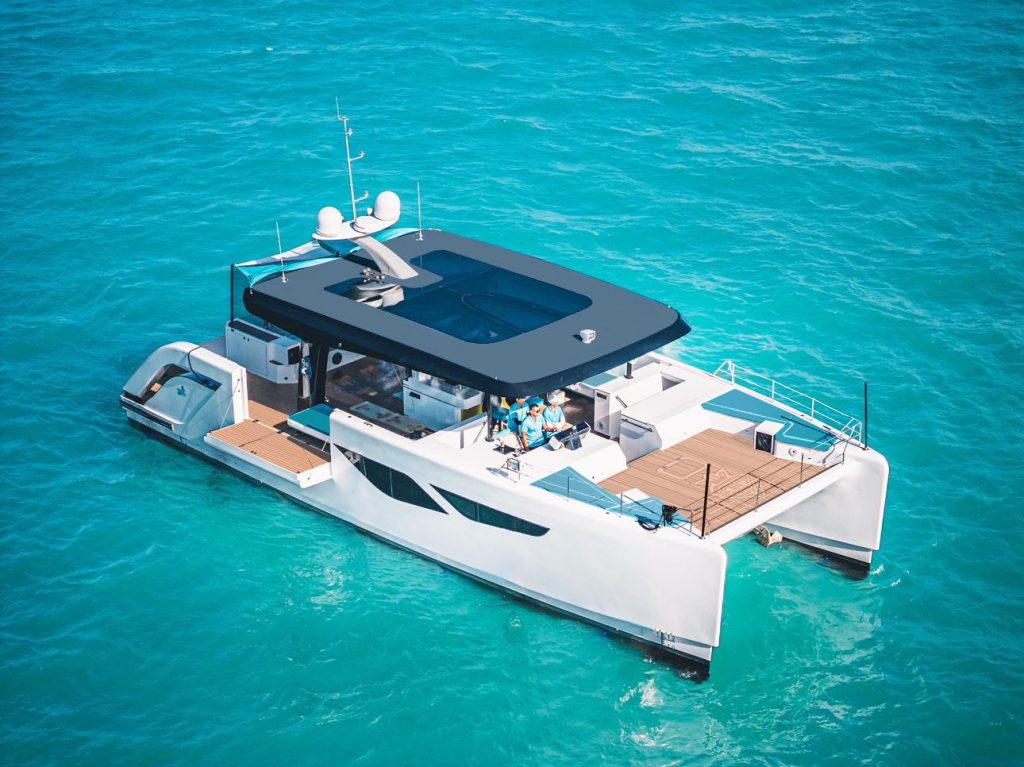
Hulls and Construction
The hulls in a catamaran are crucial to its stability and performance. These hulls help distribute the weight evenly across the water surface, minimizing drag and allowing for smoother sailing.
In general, the hulls can be categorized into two types:
- Symmetrical Hulls : The hull shape is similar on both sides, which enhances balance and stability in various sailing conditions.
- Asymmetrical Hulls : One side of the hull is designed differently than the other, which can be advantageous when sailing upwind.
The construction materials used in building catamaran hulls also play a vital role in the boat's performance and durability. Common materials include:
- Fiberglass : A popular choice due to its lightweight, strength, and ease of maintenance.
- Wood : Traditional material that offers a classic look, but requires more maintenance than fiberglass or aluminum.
- Aluminum : Lightweight and strong, aluminum is an excellent choice for high-performance catamarans 4 .
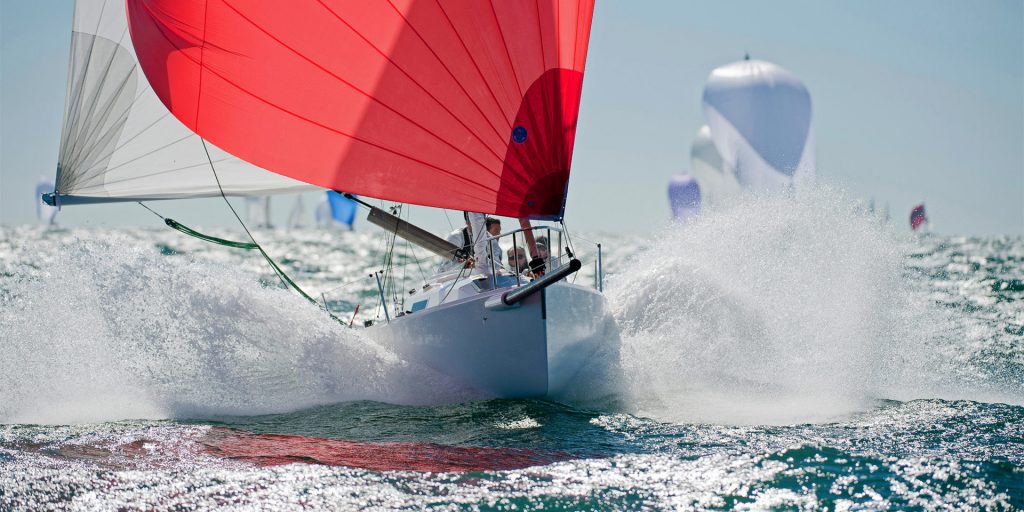
Multihulls vs Monohulls
There's often a debate between the benefits of multihull boats, such as catamarans or trimarans, and monohull boats. Here are some key differences between the two:
- Stability : Due to their wide beam and reduced heeling, catamarans offer improved stability compared to monohulls. This makes them an attractive option for those who want to avoid seasickness or feel more comfortable on the water 5 .
- Speed : Multihull boats are known for their speed, which results from their ability to minimize drag and maintain a level sail.
- Living Space : Catamarans and other multihulls generally have more living space, as both the hulls and the connecting deck can be utilized for accommodation and storage.
- Maneuverability : While monohulls are known for their agility and ability to point close to the wind, catamarans can still offer exceptional maneuverability when properly sailed 6 .
Performance and Handling
Speed and Efficiency
Power catamarans have gained popularity for offering a unique combination of speed, efficiency, and stability. Their dual-hull design allows for less water resistance, which directly translates to higher speeds and better fuel efficiency compared to traditional monohull boats.
In addition, the wide beam provided by the two hulls ensures a stable ride even at higher speeds. This makes power catamarans ideal for cruising, fishing, and watersports ( Boating Beast ).
Sailing Dynamics
When it comes to sailing catamarans , the performance is affected by factors such as keel, rudders, mast, and sails.
Their wide beam and dual-hull design provide inherent stability and reduced heeling effect, making them less likely to capsize compared to monohulls.
I should also note that catamarans have a shallow draft, which gives them the ability to access shallow waters that may be off-limits to other boats ( Navigating the Waters ).
In my experience, the lighter weight of a catamaran and its aerodynamic design can contribute to remarkable sailing performance under different wind conditions.
The larger sail area relative to hull weight allows them to harness more wind power, further enhancing their speed and agility on the water.
Maneuvering and Docking
Maneuvering and docking a power catamaran involves understanding its unique handling characteristics.
The presence of two engines in separate hulls allows for more precise control in confined spaces such as marinas.
The maneuverability of these boats is typically improved by the use of dual rudders that are located close to each powered hull for efficient steering ( BoatUS ).
When docking under power, I find it helpful to carefully assess the wind and current conditions beforehand.
This is because catamarans can be more sensitive to windage due to their larger surface area above the waterline.
By understanding how these forces may affect the boat, I can make adjustments to my approach and successfully dock the catamaran without any incidents.
Safety and Comfort on Board
Safety Features
Safety is a top priority when sailing any type of vessel, including catamarans. A well-built catamaran offers several features aimed at ensuring the safety of those onboard.
First, catamarans have inherent stability due to their wide beam and twin hull design . This makes them less prone to capsizing than monohull boats. This stability allows me to confidently navigate various water conditions .
In addition to stability, catamarans are designed with positive buoyancy, making them almost unsinkable . Of course, safety equipment such as lifejackets, flares, and first aid kits should always be onboard and well-maintained.
Furthermore, you should also stay updated on weather conditions, avoid sailing in high-risk areas, and learn your boat's safe sail limits.
Living Spaces and Comfort
When it comes to living spaces, I value comfort and practicality as essential features for my time on the water. Catamarans offer a unique advantage in this regard, as their dual hulls create spacious living areas.
Most catamarans are designed with separate cabins in each hull, allowing for privacy and comfort when sleeping. Additionally, these boats typically feature shallow drafts , which means I can access shallow waters and anchor close to shore.
The main living area, or salon, is situated on the bridge deck between the hulls. It usually includes a seating area, a dining table, and a galley (kitchen). Large windows provide ample natural light and panoramic views, making the space feel open and bright. Some catamarans even have the option for an additional living area on the upper deck where you can enjoy the sun and breeze.
One aspect of catamaran living I truly appreciate is the ample storage available. Each cabin typically has built-in storage spaces for clothes, gear, and personal items. There are also designated areas for equipment such as spare sails, tools, and water toys. This makes it easy for me to keep my belongings organized and make the most of my time on the water.
Maintaining a Catamaran
Routine Maintenance
In order to keep my catamaran in the best possible shape, I make sure to perform routine maintenance tasks. These tasks are essential to extend the life of the components and ensure smooth sailing:
- Cleaning : Regularly cleaning the deck, hulls, and sails prevents buildup of dirt, algae, and other debris that could affect performance.
- Inspection : Periodically inspecting my catamaran allows me to detect any potential issues before they become significant problems. I pay close attention to the rigging, sails, and lines on my boat.
- Lubrication : Keeping all moving parts lubricated is vital to prevent friction and wear on components such as winches and pulleys.
- Antifouling : Applying antifouling paint to the hulls of my catamaran helps prevent the growth of marine organisms that can damage the boat and reduce its speed. Make sure to do this at least once a year.
Dealing with Wear and Tear
Despite my best efforts to keep my catamaran well-maintained, wear and tear is inevitable. Here's how I deal with common issues that could arise from regular use:
- Repairs : When I notice signs of wear on sails, lines, or rigging components, I make it a priority to repair or replace them promptly. Neglecting these issues can lead to more significant problems and affect the boat's performance.
- Hull maintenance : If I find dents, scratches, or stiff rudders on my catamaran's hulls, I address them immediately. Repairing any damage not only ensures smooth sailing but also prevents further issues from developing.
- Sail care : Over time, my sails can become stretched, torn, or damaged due to exposure to sun, wind, and saltwater. Regularly inspecting them for signs of wear and making any necessary repairs or replacements helps maintain optimal performance.
- Rust and corrosion prevention : Since my catamaran is made of various metal components, I need to protect them from rust and corrosion. I routinely check for signs of corrosion and apply anti-corrosive treatments when needed.
Catamaran Brands and Models
High-Performance Models
In recent years, there has been a growing interest in high-performance catamarans. I have seen a variety of brands and models that have impressed me with their performance capabilities. One notable brand is Fountaine Pajot , which has a long history of producing a range of sailing catamarans and power catamarans. Some of their popular models include the Tanna 47 and the Bali 4.4 .
Another high-performance catamaran I've come across is the Leopard 40 . Known for their speed and exceptional handling in various conditions, the Leopard brand started with sailing catamarans and has since expanded to include power catamarans. Their models range from 40 to 53 feet long, offering both power and luxury for those looking for a thrilling experience on the water.
Cruising Catamarans
When it comes to cruising catamarans, the Lagoon brand is synonymous with luxury and comfort. With a range of sailing catamarans from 40 to 70 feet long, Lagoon offers spacious catamarans for extended bluewater cruising. Their 60- and 70-foot power catamarans are equally impressive, providing ample living space and smooth sailing experiences.
I've also found the Aquila 42 PC to be a remarkable cruising catamaran. With a focus on design and innovation, Aquila has produced catamarans perfect for exploring the open sea with friends and family. Their spacious, stable designs allow for a more enjoyable and serene journey, ensuring you arrive at your destination comfortably.
The Catamaran Lifestyle
Anchoring and Cruising
I find catamarans to be a fantastic choice for cruising and anchoring , which is a critical part of living the catamaran lifestyle . Catamarans have several advantages when it comes to anchoring and cruising, such as:
- Stability : Due to their wide beam and twin hulls, catamarans remain stable during anchoring, which reduces the risk of seasickness.
- Shallow draft : Thanks to their shallow draft , catamarans can anchor close to shore, enabling better access to protected coves and more beautiful beaches.
- Speed : Despite their large size for cruising vessels , catamarans are generally faster than monohulls. This is a result of their slim hulls and reduced water resistance.
When it comes to anchoring, catamarans can make use of their shallow draft to anchor in locations that other boats cannot. This allows for a greater range of cruising spots, which makes the overall experience much more enjoyable and unique.
Living on a Catamaran Full-time
For many catamaran enthusiasts, the dream of living full-time on a catamaran is entirely possible. While not without challenges, there are several factors that make living aboard a catamaran an enjoyable experience:
- Spacious living areas : Catamarans generally have more living area compared to monohulls, providing ample space for the whole crew.
- Privacy : The separate hulls allow for private cabins, ensuring that everyone on board has their space.
- Stability : As mentioned earlier, catamarans are stable vessels, making living on them more comfortable than monohulls.
Choosing Your Catamaran
Comparing Models and Features
When I start to look for the perfect catamaran, the first thing I focus on is comparing various models and features .
I determine the key factors that are essential for my needs, such as size, passenger comfort, and performance. By doing so, I can identify which catamaran models are most suitable for me.
For example, if I plan to sail with a large group, I would look for a catamaran that offers ample space both inside and out.
To help me with my comparisons, I usually create a table or list of the different models and their features:
| Model | Size | Comfort | Performance |
|---|---|---|---|
| A | 40ft | Spacious | High |
| B | 35ft | Average | Average |
| C | 45ft | Luxury | High |
This visual aid makes it easier for me to sort the options and prioritize my considerations, such as price, yacht type, and brand.
New vs. Second-Hand
Another critical aspect of choosing a catamaran is deciding between a new or second-hand boat.
Both options have their pros and cons, and ultimately it depends on my preferences and budget.
If I can afford a new catamaran, I get the advantage of the latest design , features, and technology. Plus, I typically receive better warranty coverage and support from the manufacturer.
However, new catamarans are more expensive and can have long wait times due to high demand.
On the other hand, purchasing a second-hand catamaran can save me a significant amount of money, and I might find a high-quality boat with low mileage or well-maintained by the previous owner.
However, this option carries more risks, as I need to be knowledgeable about potential maintenance issues and conduct a thorough inspection before purchase.
Learning Resources
Books and Manuals
When it comes to learning about catamarans, there are plenty of books and manuals available.
One of the highly recommended books is Multihull Voyaging by Thomas Firth Jones. This book provides a comprehensive understanding of multihulls, including catamarans, and is an essential guide for any beginner sailor.
Another great book to check out is Catamarans: The Complete Guide for Cruising Sailors by Gregor Tarjan.
With a foreword by Charles K. Chiodi, publisher of Multihulls Magazine, this book covers all aspects of cruising catamarans. It includes detailed information on design, construction, and maintenance, as well as tips and tricks for sailing a catamaran.
Here are a few more books that I find valuable:
- The Catamaran Book by Tim Bartlett, an excellent resource for both beginners and experienced sailors
- Catamaran Sailing: From Start to Finish by Phil Berman and Lenny Rudow, a comprehensive guide to both catamaran racing and cruising
Online Content and Photography
In addition to books, you can find plenty of online content and photography about catamarans.
Websites like Sailaway Blog and Boating Guide offer tips, techniques, and how-to articles for sailing catamarans.
Many of these sites also include stunning photography, showcasing these beautiful vessels in action.
For those who prefer Kindle or e-books, many of these resources are available in digital format.
This makes it easier for you to access them anytime, anywhere, allowing you to keep learning and improving your catamaran sailing skills.
To further enhance your knowledge, you can also join online forums and communities dedicated to catamarans.
These platforms provide invaluable advice and first-hand experiences shared by fellow sailors, as well as recommendations for additional learning resources.
Frequently Asked Questions
What factors should be considered when choosing a catamaran for full-time living?
When choosing a catamaran for full-time living, consider its space and layout , as it will become your home.
Look for a design with a comfortable living area , ample storage, and sufficient berths for the number of people living aboard.
Also, consider fuel efficiency , ease of maintenance, and the catamaran's cruising range .
Lastly, the overall cost of ownership , including insurance and mooring fees, should be considered.
How do catamarans perform in rough sea conditions?
In general, catamarans are known for their stability, which is primarily due to their wide beams. This makes them less prone to capsizing when compared to monohulls.
However, their performance in rough sea conditions will depend on the specific model and design of the catamaran. Some may perform better in certain conditions than others, so researching and selecting the right design is essential.
What are the key differences between sailing a catamaran and a monohull?
One of the main differences between catamarans and monohulls is stability.
Catamarans have a wider beam , which makes them more stable and minimizes the risk of capsizing.
They also have shallower drafts, which allow them to access more shallow waters compared to monohulls.
Additionally, catamarans often have larger living spaces, making them more comfortable and suitable for cruising and full-time living.
What are the advantages of catamarans for long-distance cruising?
Catamarans offer several advantages for long-distance cruising.
Their wide, stable design provides a comfortable ride and reduces the risk of seasickness.
They can also attain higher speeds due to their reduced drag and generally sail faster than monohulls on certain points of sail.
The shallow draft allows them to explore more coastal areas and anchor closer to shore. Lastly, their spacious interiors make them ideal for extended cruises and living aboard.
How does one assess the value of a used catamaran on the market?
Assessing the value of a used catamaran requires thorough research and inspection.
Start by comparing the age, model, and condition of the catamaran to similar listings on the market.
Take note of any upgrades or additions made to the boat, as these can affect the price.
It's essential to inspect the boat in person or hire a professional surveyor to ensure there are no hidden issues that could affect its value.
What essential features should be looked for in a catamaran intended for ocean voyages?
For ocean voyages, look for a catamaran with a strong, well-built hull designed to handle rough conditions.
Safety features such as liferafts, adequate flotation, and sturdy deck hardware are crucial.
A reliable engine and well-maintained rigging and sails are also essential.
In terms of living space, opt for a catamaran with a comfortable, spacious interior and ample storage.
Last but not least, good navigation and communication systems are necessary for long-distance ocean voyages.
Related Articles
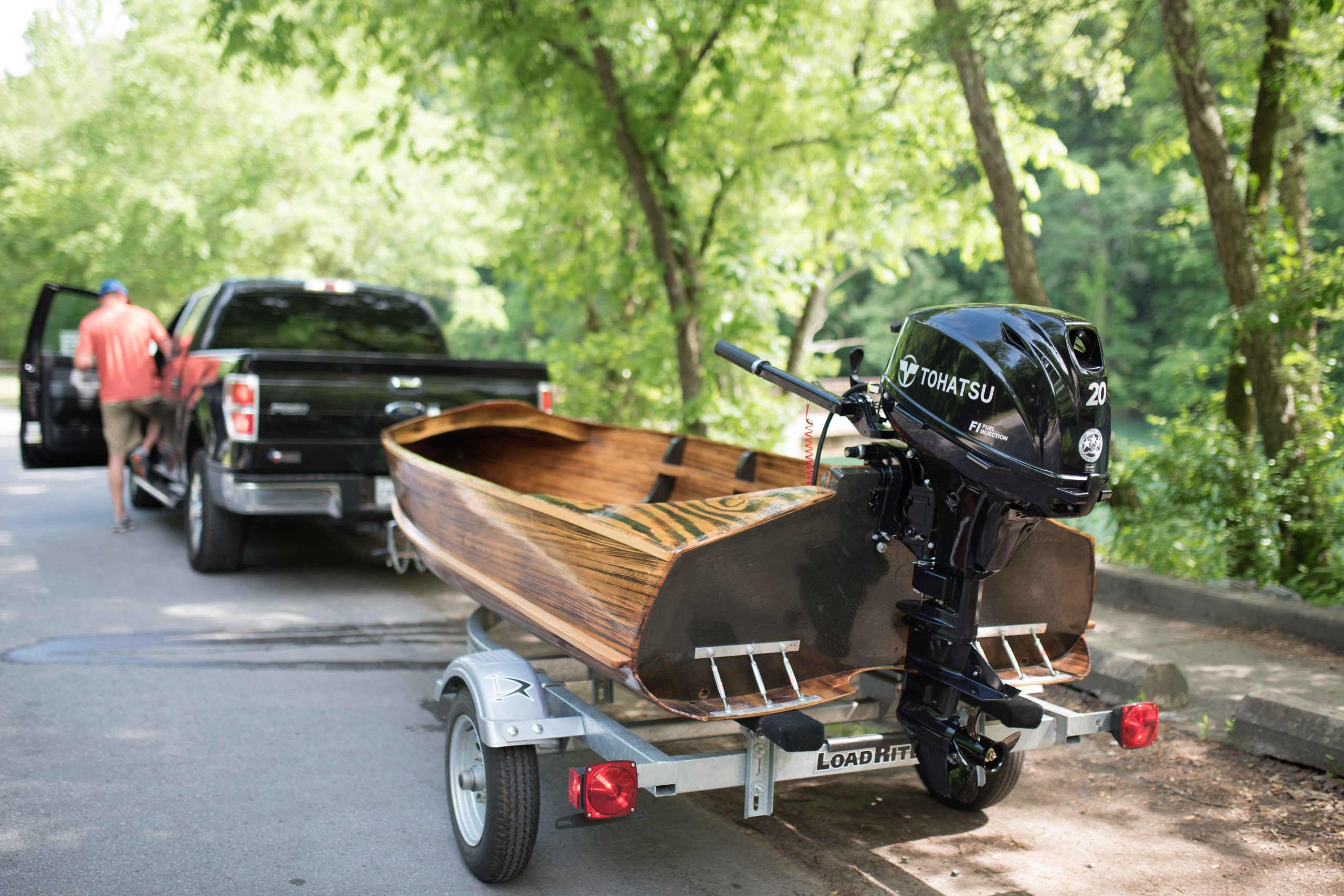
Tohatsu Outboard Motors: A Comprehensive Guide for Boating Enthusiasts
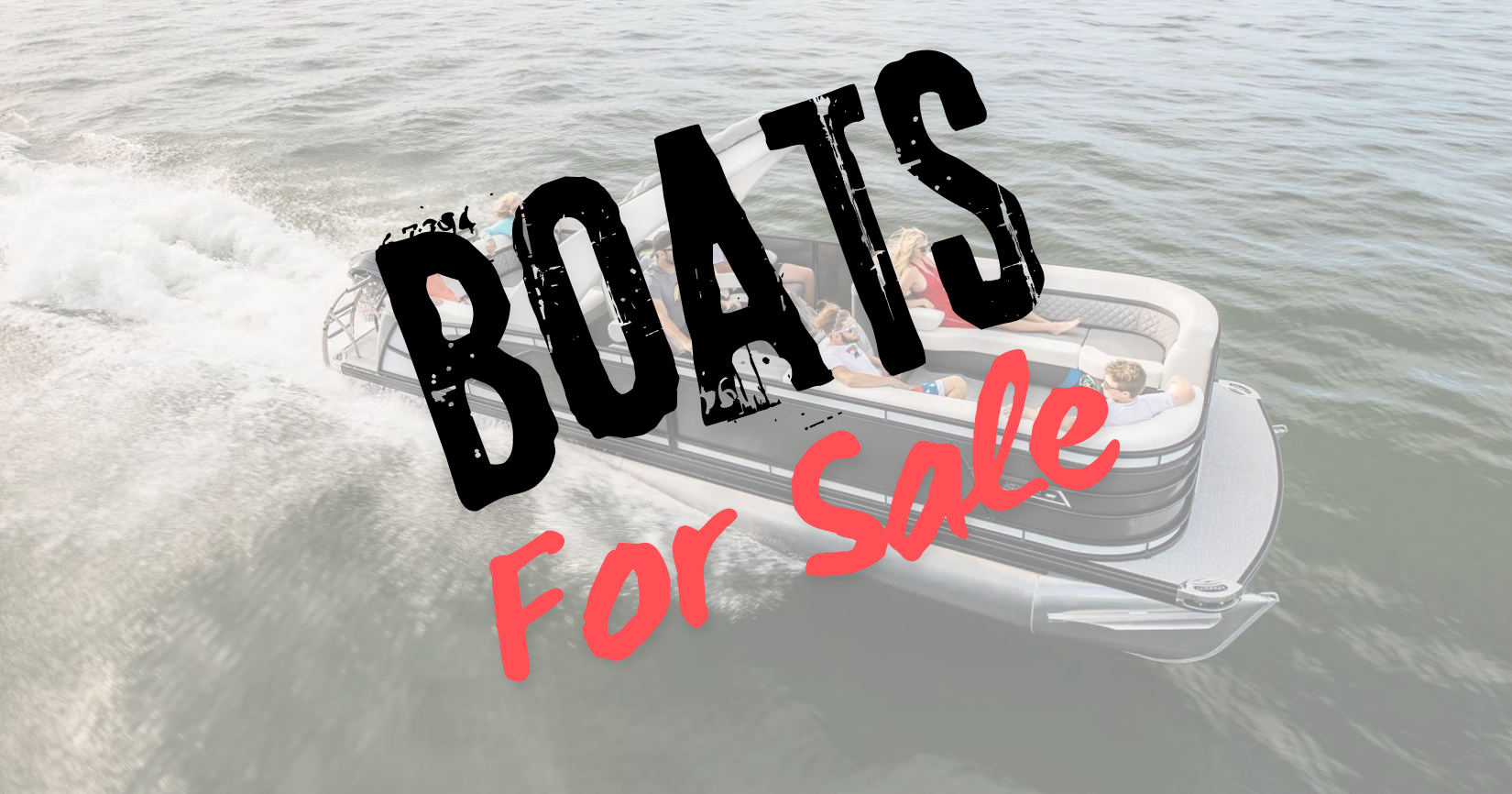
Used Boats for Sale Near Me: Top Listings for Every Budget
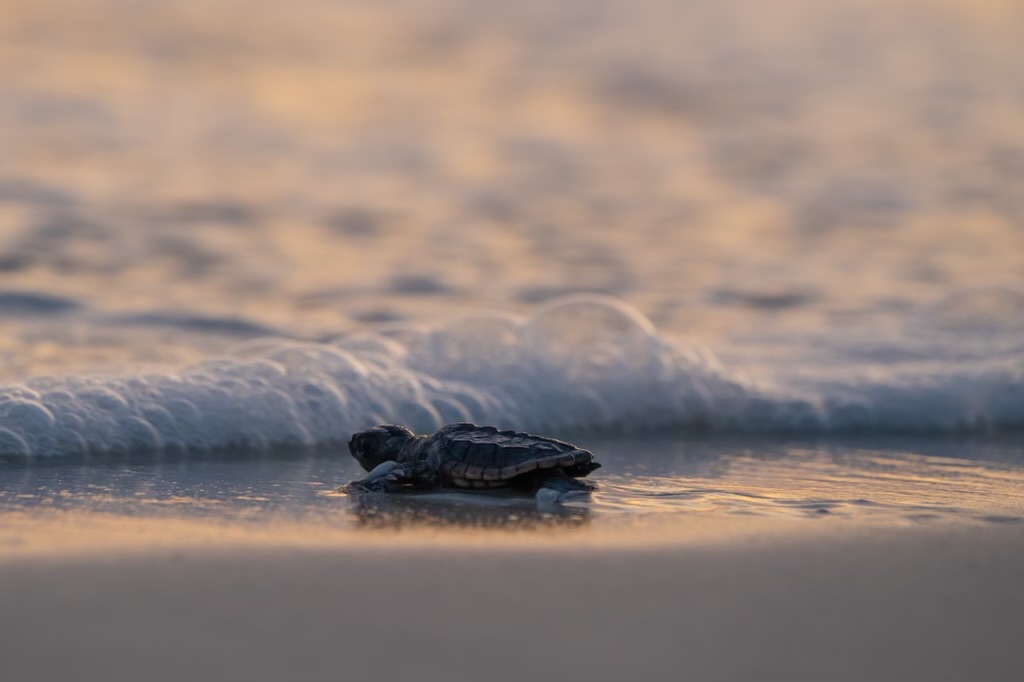
Florida Gulf Coast Beaches: Top Picks for a Perfect Vacation

Is living aboard a boat really a reasonable alternative to buying home
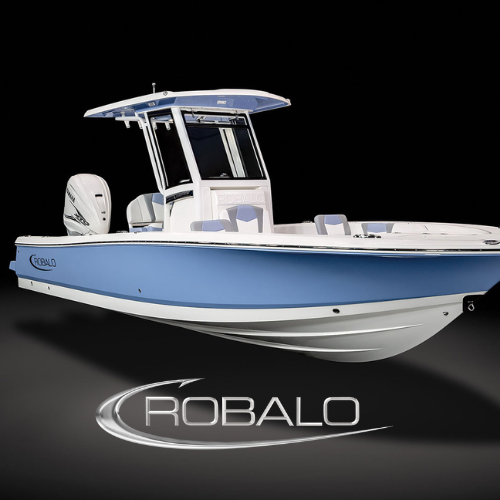
Robalo Boats: Unrivaled Performance and Luxury on the Water
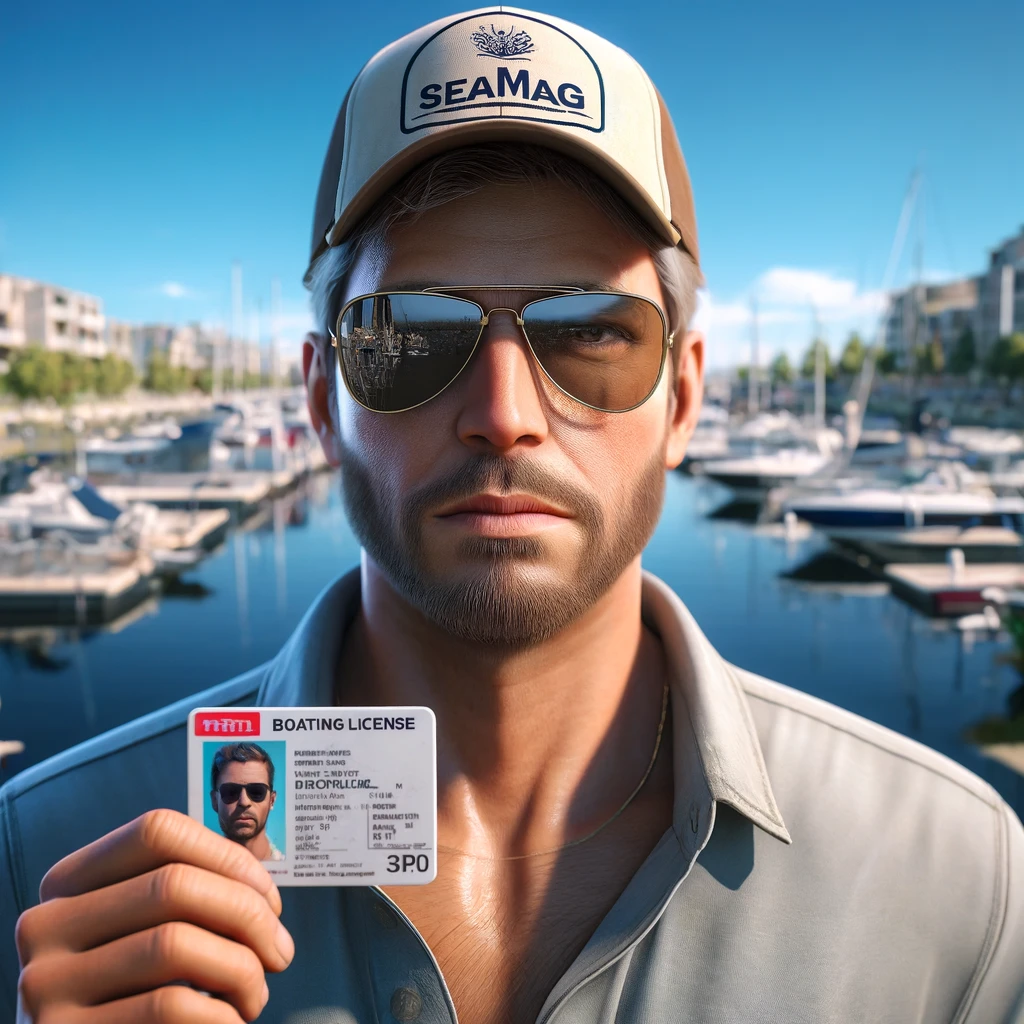
Boating License: Essential Tips and Requirements for Success

Top 5 Boston Whaler Models - Find the Perfect Ride for Your Next Adventure
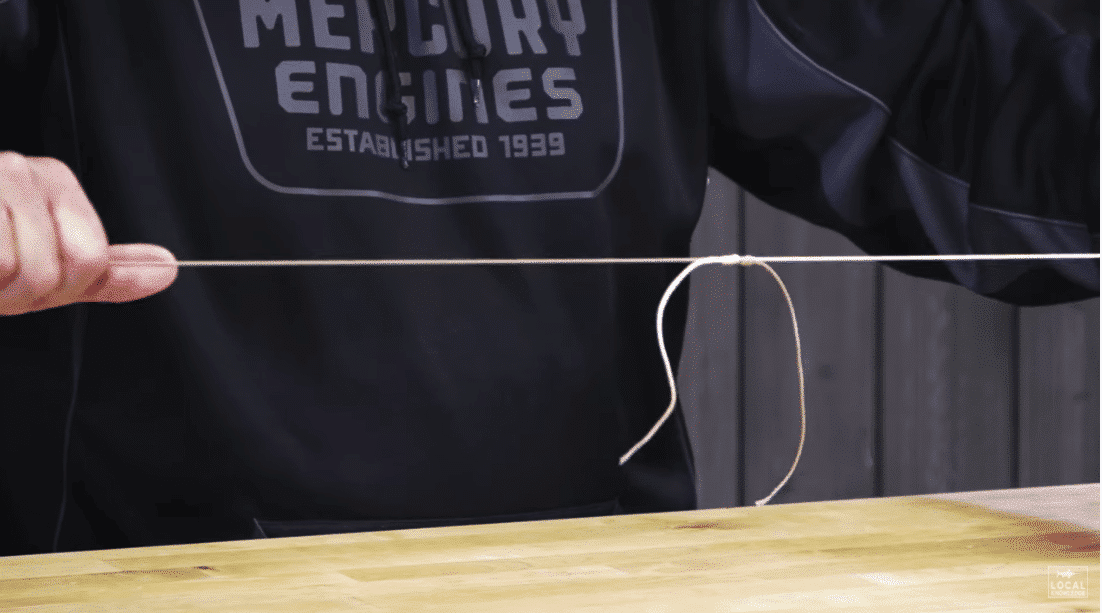
Double Uni Knot: Essential Guide for Secure Fishing Connections
Parts of Catamaran: A Comprehensive Guide to Understanding the Components
by Emma Sullivan | Aug 2, 2023 | Sailboat Racing

Short answer: The key parts of a catamaran include the hulls, bridgedeck, mast(s), rigging, sails, rudders, and daggerboards. These components work together to provide stability, propulsion, and control for this type of multi-hulled watercraft.
Exploring the Essential Parts of a Catamaran: A Comprehensive Guide
From cruising the open seas to enjoying lazy afternoons by the shore, catamarans have become a popular choice for water enthusiasts. With their unique design and exceptional stability, these vessels offer an unmatched sailing experience . But have you ever wondered what makes up a catamaran and how each part contributes to its overall functionality? In this comprehensive guide, we will take you through the essential parts of a catamaran, uncovering their purpose and shedding light on why they are instrumental in making these boats such fantastic options for adventure seekers.
1. Hulls: The hulls are the twin structures that form the main body of a catamaran. These structures play a pivotal role in providing stability and buoyancy while at sea. Catamarans boast wider hulls compared to traditional monohull sailboats, resulting in increased surface area and enhanced stability. The design allows for smoother sailing even in rough waters, as each hull slices through waves independently.
2. Keels: Unlike monohull sailboats that rely solely on a single keel positioned beneath the waterline for both lift and resistance against sideways drift (known as leeway), catamarans often feature two separate skegs or keels attached to each hull. These auxiliary structures enhance directional control and offer excellent stability while reducing drag.
3. Deck: The deck is where all the action takes place! It serves as the primary horizontal surface on which passengers can relax, sunbathe or engage in various activities while aboard the vessel. Catamaran decks usually come with ample space due to their wider design compared to monohull sailboats .
4. Trampoline: One of the standout features of a catamaran is its trampoline – a mesh-like netting stretched between the two hulls just above sea level. While it may seem like an unconventional addition, trampolines provide multiple benefits including giving passengers an exhilarating sensation as they sit or lay above the water. This ample recreational area additionally offers an unobstructed view of the sea, making it an ideal spot for stargazing or simply enjoying the soothing sound of the waves.
5. Cockpit: The catamaran’s cockpit is strategically positioned closer to the waterline, ensuring a thrilling and immersive sailing experience. It acts as the primary control center where the helm is located, allowing sailors to expertly navigate their vessel through various seascapes. Additionally, some catamarans offer spacious cockpits that provide sufficient seating capacity for socializing with fellow passengers or hosting intimate gatherings while at anchor.
6. Rigging: The rigging refers to all lines, cables, and hardware necessary for controlling and adjusting the sails . Catamarans typically employ a simple yet effective rigging system that ensures easy maneuverability and efficient sailing performance. By skillfully managing these components, sailors can harness wind power optimally and maintain smooth cruising speeds in any weather conditions.
7. Sails: Sails are central to a catamaran’s propulsion system, enabling it to move gracefully across bodies of water without relying on fuel-based engines alone. Modern catamarans often embrace a sail plan consisting of multiple sails designed to maximize efficiency and adapt seamlessly to varying wind strengths and directions. With innovative designs such as fully battened mainsails and lightweight genoas, these boats have become incredibly agile even when faced with challenging wind patterns.
8. Engines: While a catamaran’s sails provide a significant portion of its power source, auxiliary engines are still crucial for many aspects of sailing life – be it docking in tight spaces or maneuvering during low-wind situations. These engines are usually mounted within each hull beneath deck level as part of an integrated propulsion system comprising shafts, propellers, and operational controls.
9. Navigation Instruments: In today’s era of advanced technological aids, catamarans make use of a range of navigation instruments to enhance safety and efficiency. From GPS systems providing precise positional information to depth sounders measuring water depth, these sophisticated tools are essential for ensuring smooth journeys and avoiding potential hazards.
So there you have it – a detailed glimpse into the essential parts of a catamaran. Wherever your sailing adventures take you, now you can fully appreciate how each component contributes to the incredible performance and unrivaled experience offered by these magnificent vessels. So hop aboard a catamaran and embark on your next nautical journey with confidence!
How to Identify and Understand the Various Components of a Catamaran
Catamarans are fascinating vessels known for their unique design and exceptional performance on the water. Whether you are a seasoned sailor or just interested in learning more about these incredible boats, understanding their various components is essential . In this blog post, we will take a detailed, professional, witty, and clever dive into the world of catamarans and shed light on how to identify and understand their different parts .
1. Hulls: At the core of any catamaran are its hulls – the main supportive structures that keep the boat afloat. Unlike traditional single-hulled vessels, catamarans have two parallel hulls connected by a deck. These hulls play a vital role in providing stability and minimizing drag while sailing. Think of them as the sturdy legs that help the catamaran gracefully glide through the water .
2. Deck: The deck serves both as a platform for enjoying your time onboard and as an important structural element that connects various parts of the catamaran. It consists of multiple areas such as the helm station (where you control the boat), seating areas, dining spaces, trampoline nets for lounging, and storage compartments. Sunbathing or hosting friends for a sunset gathering? The deck has got you covered!
3. Rigging: If you’ve ever looked up at a sailboat’s mast with admiration, then you’ll love discovering how rigging contributes to a catamaran’s overall performance and elegance. The rigging includes all the supporting wires and ropes that hold up the mast(s) on your catamaran and control its position relative to wind direction (known as “trimming”). Understanding how to properly trim your sails can greatly enhance your sailing experience – from capturing optimal wind power to achieving picture-worthy maneuvers.
4. Sails: What could be more mesmerizing than watching billowing sails against an azure sky? Catamarans utilize various types of sails based on their purpose – mainsails, jibs, genoas, spinnakers – each designed to maximize performance under specific wind conditions. Learning about the different sails and their characteristics will help you navigate efficiently and make the most of your sailing adventures. Plus, understanding the art of sail trim is sure to impress your fellow sailors!
5. Rudders: Just as a captain relies on his or her compass for navigation, catamarans depend on rudders to steer through the water with precision. Mounted at the stern (rear) of each hull, these ingenious components allow you to control your course by diverting the flow of water passing beneath them. Rudders are essential for maintaining stability and maneuverability when tacking, jibing, or navigating challenging waters.
6. Engines: Catamarans aren’t solely reliant on wind power; they often incorporate engines as auxiliary means of propulsion. These mechanical marvels provide added security and flexibility during low-wind situations or when maneuvering in confined spaces like marinas or crowded anchorages. Understanding how to handle your catamaran’s engines confidently will ensure smooth sailing even when Mother Nature plays hard-to-get.
By expanding your knowledge about these various catamaran components – hulls, deck, rigging, sails, rudders, and engines – you’ll unlock a whole new level of appreciation for these magnificent vessels and gain confidence in navigating them.
Lastly, remember that wit and cleverness go hand-in-hand with professionalism when exploring any topic. So have fun while unraveling the mysteries of catamaran anatomy! Perhaps envision yourself as an expert sailor who can distinguish port from starboard blindfolded or sharpen your comedic skills by jokingly referring to hulls as “feline foundation” (though cats might not appreciate sharing their name with boats!).
Happy sailing!
Step-by-Step Breakdown: Unraveling the Mysteries behind Catamaran Anatomy
Catamarans have become increasingly popular in recent years, mainly due to their unmatched stability and impressive speed capabilities. But have you ever wondered what lies beneath the sleek exterior of these remarkable vessels? In this blog post, we will delve into the intricate details of catamaran anatomy, providing you with a comprehensive understanding of how these boats are constructed and why they excel on the water.
1. The Hulls: The Foundation of Stability At the core of every catamaran lies its hulls – two parallel structures that run alongside each other. Unlike traditional monohull boats that feature a single hull, catamarans distribute their buoyancy across two hulls, offering superior stability even in rough waters. These hulls are typically made from fiberglass or aluminum and are designed to cut through waves effortlessly, minimizing resistance and maximizing speed.
2. Bridging the Gap: The Trampoline One striking feature present in many catamarans is the trampoline located between the two hulls. This sturdy mesh-like material serves various purposes. Firstly, it provides an additional platform for sunbathing or relaxing while underway. Secondly, it acts as a safety net by preventing crew members or passengers from falling into the ocean should any unexpected jolts occur during navigation .
3. Connecting Hulls: The Crossbeams In order to maintain structural integrity and connect both hulls securely, catamarans utilize crossbeams that stretch between them. These crossbeams play a vital role in sharing weight distribution evenly across both sides, ensuring stability and balance at all times.
4. Above Deck: Central Cockpit and Living Space Moving upwards onto the deck area, you’ll discover a central cockpit where most controls and steering mechanisms are located. This strategic placement allows for optimum visibility and easy maneuverability while sailing. Additionally, catamarans often feature large living spaces, including saloons and cabins that provide ample room for socializing, dining, and sleeping. Their spaciousness is a significant factor contributing to their growing popularity among cruising enthusiasts.
5. The Power of Sails: Rigging and Sail Plan Catamarans rely on sails for propulsion, utilizing a complex system of rigging to hoist and control them effectively. A unique feature of catamarans is the absence of a single mast; instead, they employ multiple masts strategically positioned between the hulls. This configuration optimizes sail area while reducing heeling (when a boat tips sideways due to windy conditions), resulting in smoother sailing experiences even during stronger winds.
6. Additional Features: Daggerboards or Foils To enhance performance further, some catamarans are equipped with daggerboards or foils – retractable appendages located beneath each hull. These boards reduce lateral slippage by providing lift, improving upwind capability and enhancing overall speed. As technology advances, advanced hydrofoil systems have also been introduced in certain catamaran models, allowing these boats to glide above the water ‘s surface entirely.
By unraveling the mysteries behind catamaran anatomy step-by-step, it becomes evident why these vessels are highly sought after by both leisure sailors and competitive racers alike. From their stable hull design to innovative features such as trampolines and foils – every element plays its part in creating an exceptional sailing experience that combines comfort, speed, and versatility. Perhaps now you can fully appreciate these engineering marvels whenever you set sight on one gliding gracefully through the waves!
Frequently Asked Questions about the Different Parts of a Catamaran Answered
Have you ever looked at a catamaran and wondered what all those different parts are called? Or maybe you’re thinking about buying or renting a catamaran and want to be familiar with its components . Well, look no further! We’ve compiled a list of frequently asked questions about the different parts of a catamaran and will provide detailed, professional, witty, and clever explanations just for you.
1. What is a Catamaran? A catamaran is a type of boat that consists of two parallel hulls connected by a deck. It offers increased stability compared to traditional monohull boats due to the wider beam. This unique design allows for smoother sailing experiences and more spacious interiors.
2. Hulls – What Are They? The hulls are the main structure of a catamaran, providing buoyancy and supporting the entire vessel. Typically made from fiberglass or aluminum, they have curved shapes that help reduce resistance in the water while providing stability. Think of them as the legs of the feline-inspired boat!
3. Trampoline – Isn’t That for Jumping? While it may sound similar to the equipment used for bouncing around at your local playground, in the world of catamarans, trampoline refers to an open area between the hulls where passengers can relax or even stretch their sea legs! Made from durable materials like nylon mesh or PVC canvas, trampolines provide excellent circulation and an unobstructed view below deck.
4. Rigging – Is it Related to Sailing Techniques? Indeed! Rigging refers to all the elements involved in controlling sails on a catamaran . This includes mast(s), boom(s), standing rigging (shrouds & stays), running rigging (halyards & sheets), winches, cleats – basically everything needed to manipulate wind power efficiently and safely navigate through various conditions.
5. The Mast – How Tall Should It Be? The mast, often made of aluminum or carbon fiber composite, is the tall vertical pole that holds up the sails. Its height depends on several factors, such as boat size, intended use, and the desired sail area. Think of it as the catamaran’s lighthouse – guiding you along your aquatic adventures with grace.
6. Boom – Not Just a Sound Effect! Nope, not just an imitation of an explosion! The boom is a horizontal spar attached to the bottom of the mast, helping support and control the lower edge (foot) of the mainsail. It swings back and forth with changes in wind direction – think of it as a catamaran’s wagging tail!
7. Daggerboards – Are They Catamaran Ninja Weapons? While they may sound dangerous and ninja-worthy, daggerboards are actually retractable foils that extend from each hull into the water. Their purpose? Providing lateral resistance against sideways motion caused by wind force while improving upwind performance by reducing leeway – no martial arts skills required!
8. Rudders – Steering Like a Pro Like most boats, catamarans have rudders for steering purposes. These underwater blades at the stern help control direction by redirecting water flow around them when turned. Whether you’re tacking or gybing through waves or researching rudder-related puns like this one—we’ve got you covered.
So there you have it – frequently asked questions about the different parts of a catamaran answered in detail! Now you can impress your fellow sailors with your newfound knowledge or confidently embark on your next seafaring adventure aboard one of these sleek double-hulled vessels ! Remember to keep exploring and enjoy every nautical mile!
The Key Elements That Make up a Catamaran: Everything You Need to Know
Title: The Key Elements That Make up a Catamaran: Everything You Need to Know
Introduction: Catamarans have long fascinated sailing enthusiasts with their unique design, efficient performance, and spacious interiors. Whether you are a seasoned sailor or a curious novice, understanding the key elements that make up a catamaran is essential. In this enlightening article, we will delve into the intricate details of these remarkable vessels, uncovering the secrets behind their success on the open seas .
1. Hull Design: Stability Meets Speed At the heart of every catamaran lies its dual-hull structure. Unlike traditional monohulls, catamarans feature two separate hulls connected by a spacious deck. This design offers enhanced stability and reduced heeling, making them less prone to capsizing compared to their single-hulled counterparts. The inherent buoyancy allows for faster speeds and smoother sailing experiences—enabling both exhilarating adventures and relaxed cruising.
2. Beam: Embracing Extra Space One of the most significant advantages of a catamaran is its beam—the width between its two hulls—which can be quite impressive. The ample beam creates an exceptionally generous living area that sets catamarans apart from other sailboats . More space means greater comfort for passengers and crew alike; accommodating larger groups, luxurious amenities, and even personalized additions such as Jacuzzis or sunbathing decks.
3. Stability & Balance: A Steady Journey In addition to their unique structural design, catamarans offer exceptional stability through weight distribution and physics principles. With twin hulls spread apart at a considerable distance, it becomes significantly easier to maintain balance during sailing motions—a significant advantage for those susceptible to seasickness or seeking effortless navigation under challenging conditions.
4. Sailor-Friendly Handling: Ease-of-Use at Sea Catamarans excel in terms of maneuverability due to several factors working harmoniously together. Their shallow drafts allow for exploration in shallower waters, and docking becomes a breeze with the ability to navigate narrower marinas. Furthermore, their twin engines operate independently, offering excellent control even in tight spots or challenging wind conditions—a maneuverability dream for sailors of all skill levels.
5. Sailing Performance: Effortless Speed When it comes to performance on the water, catamarans stand tall once again. The efficiency gained from their two hulls reduces drag and enables quicker acceleration, resulting in higher average speeds than traditional monohulls. Even when faced with light winds, their ample deck space allows for customized rigging options—such as efficient sails or high-tech foiling capabilities—that can unlock extraordinary speed potential.
6. Comfortable Living Spaces: An Unprecedented Haven Catamarans redefine on-board living by providing both ample space and superior comfort. The expansive interior saloon offers panoramic views of the surroundings while being versatile enough to cater to various activities—from hosting lively social gatherings to peacefully reading a book by the window. Additionally, private cabins are often located in each hull, creating secluded sanctuaries for relaxation and tranquility amidst enchanting seascapes.
Conclusion: As we conclude our exploration into the key elements that make up a catamaran, it becomes evident why these vessels have become revered in the sailing world . The revolutionary dual-hull design ensures stability and faster speeds while offering unparalleled comfort and spaciousness aboard. Whether you seek adventure or serenity on the seas, understanding these elements will help you appreciate catamarans’ remarkable qualities truly—an embodiment of innovation and maritime excellence brought together harmoniously by human ingenuity.
Mastering the Parts of a Catamaran: A Beginner’s Guide for Sailing Enthusiasts
Are you a sailing enthusiast who is fascinated by the sleek and efficient design of catamarans? If so, then you’ve come to the right place! In this comprehensive beginner’s guide, we will delve into the key components of a catamaran and unlock the secrets to mastering its various parts. So grab your sailor’s hat and get ready to embark on an exciting journey through the intricate world of catamaran sailing!
The first component that sets a catamaran apart from other sailboats is its dual-hulled structure. Unlike traditional monohull sailboats, which have only one hull, catamarans feature two parallel hulls connected by a deck or bridge. This unique design grants them exceptional stability, speed, and even more interior space for amenities such as cabins and lounging areas.
Now let’s move onto a crucial part of any sailboat – the rigging . The rigging system on a catamaran consists of numerous elements that work harmoniously to control and manipulate the sails . Firstly, there are the masts: tall vertical structures that support the sails. Catamarans typically have two masts placed towards each end of the boat , allowing for efficient distribution of power.
Attached to these masts are various types of sails, including mainsails, jibs or genoas (fore-sails), and spinnakers (used for downwind sailing). The main sail is the largest sail on a catamaran and is hoisted up the mast using halyards – ropes specifically designed for this purpose. Jibs or genoas assist in maneuverability by generating additional power when sailing upwind.
For those seeking exhilarating downwind adventures, spinnakers add an extra element of thrill to your journey! These expansive triangular or bulbous-shaped sails catch wind from behind and propel your catamaran with remarkable swiftness. Learning how to handle these different types of sails will be crucial to seamlessly controlling the boat and maximizing performance on the water.
Next in line are the helm and steering system, responsible for guiding your catamaran ‘s path as it gracefully glides through the waves. The helm, often referred to as the steering wheel , is used to control the rudders located at each hull’s stern. One unique characteristic of catamarans is their tilting tendency caused by wind pressure acting upon the exposed surface area of their broad decks. Therefore, mastering steering techniques, including adjusting sail configurations and keel positions, will help you navigate with finesse and maintain balance.
One particularly innovative feature found in some catamarans is a daggerboard or a centerboard system. Located between the two hulls beneath the waterline, these retractable fins can be individually raised or lowered to vary their depth while sailing. By adjusting these boards according to wind conditions and point of sail , you can minimize resistance, optimize speed, and even prevent lateral drift.
We cannot overlook catamarans’ anchoring systems when discussing their components . Anchors are vital for keeping your vessel secure when moored or stopping for a leisurely swim in crystal-clear waters. Most modern catamarans employ bow rollers integrated at the front end that facilitate effortless anchor deployment and retrieval. With an array of anchor types available — from plows to flukes — it’s essential to understand each one’s characteristics in various seabed environments.
Lastly, let’s not forget about safety equipment onboard! While mastering catamaran parts allows for glorious adventures on calm seas, unforeseen challenges may arise during your sailing odysseys. It’s important always to have safety essentials like life jackets, fire extinguishers, first-aid kits, emergency flares, and navigational tools like GPS systems.
So there you have it – a comprehensive overview of key components necessary for mastering the art of sailing a catamaran! Understanding how each piece of the puzzle fits together and harmonizes uniquely will set you on a path to becoming a skilled catamaran sailor . Whether you’re gliding across tranquil bays or tackling exhilarating rough seas, this guide will equip you with the knowledge and confidence to embark on unforgettable nautical journeys!
Recent Posts

- Sailboat Gear and Equipment
- Sailboat Lifestyle
- Sailboat Maintenance
- Sailboat Racing
- Sailboat Tips and Tricks
- Sailboat Types
- Sailing Adventures
- Sailing Destinations
- Sailing Safety
- Sailing Techniques
Catamaran Experience: Exploring Catamaran Interior Design

November 1, 2023

Catamarans, known for their impressive stability and spaciousness, have gained immense popularity among sailing enthusiasts and vacationers alike. These twin-hulled vessels provide an exceptional sailing experience and an even more remarkable sense of comfort and luxury, especially when it comes to their interiors. In this article, we will dive into the captivating realm of catamaran interior design, exploring the various aspects that contribute to making these vessels not only functional but also aesthetically pleasing and accommodating.
When it comes to catamaran interior design, form and function go hand in hand. The primary goal is to maximize space efficiency while ensuring a comfortable and visually appealing environment. Catamaran interiors are ingeniously designed to cater to the needs of those on board, whether for short day trips or extended voyages.
Spacious Living Areas
One of the key advantages of catamarans is their spaciousness. The wide beam between the twin hulls allows for open and airy living spaces. The main saloon, often located in the center of the catamaran, serves as the heart of the vessel. It typically features large windows that provide stunning panoramic views of the surrounding seascape. This area is perfect for dining, relaxing, and socializing with fellow passengers.
Catamaran galleys are designed with functionality in mind. The galley, where meals are prepared, is often equipped with modern appliances and ample counter space. What sets it apart is the incredible view it offers. Imagine cooking with a backdrop of sparkling blue waters and breathtaking sunsets. This unique feature adds a touch of magic to every meal and makes the galley a focal point of the catamaran interior.
Luxurious Cabins
Catamarans typically offer spacious and comfortable cabins for overnight stays. Each cabin is carefully designed to maximize comfort and privacy. The cabins often include large beds, storage space, and en-suite bathrooms, ensuring that passengers have all the amenities they need for a restful night’s sleep.
Many catamaran owners and charter companies offer options for customization and personalization. This means that you can tailor the interior of your catamaran to suit your preferences. From choosing color schemes to selecting high-quality materials and finishes, customization allows you to create a catamaran interior that reflects your individual style and taste.
Lighting and Ventilation
Proper lighting and ventilation are crucial for a comfortable catamaran interior. Large windows, hatches, and portholes are strategically place to allow natural light to flood the living spaces and provide excellent cross-ventilation. This not only enhances the overall ambiance but also reduces the need for artificial lighting and air conditioning.
Catamarans are known for their multifunctional design. Interior spaces are often designe with versatility in mind. Furniture and fixtures can be easily rearrange or stowed away to adapt to various activities, whether it’s hosting a dinner party, stowing away water sports equipment, or simply creating an open space for relaxation.
Nautical Aesthetics
Catamaran interior design often draws inspiration from nautical aesthetics. You’ll find elements such as marine-themed decor, nautical color palettes, and sleek, modern lines that complement the vessel’s exterior design. These design choices create a cohesive and visually appealing environment that resonates with the spirit of sailing.
In today’s world, sustainability is a top priority. Many catamaran owners and builders are embracing eco-friendly practices when it comes to interior design. This includes the use of sustainable materials, energy-efficient appliances, and waste reduction strategies. By making conscious choices, catamarans are not only luxurious but also environmentally responsible.
The Future of Catamaran Interior Design
As technology continues to advance, catamaran interior design is likely to evolve as well. Innovations in smart home technology, energy-efficient systems, and sustainable materials will play an increasingly significant role in shaping the future of catamaran interiors. The focus will remain on providing passengers with a comfortable and enjoyable experience while also addressing environmental concerns.
The interior design of catamarans is a captivating blend of form and function, offering passengers an exceptional sailing experience. With spacious living areas, well-equipped galleys, luxurious cabins, and the option for customization, catamarans provide a level of comfort and luxury that’s hard to match. Lighting, ventilation, and multifunctional design further enhance the overall experience, while nautical aesthetics give these vessels a unique character. As sustainability becomes more important, the industry is adapting to eco-friendly practices . With a bright future ahead, catamarans are set to continue making waves in the world of sailing and interior design.
RELATED TAGS
- create a catamaran interior
- eco-friendly practices
- exceptional sailing experience
SHARE, LIKE, REPEAT
Let's connect.
- Privacy Policy

Lagoon 450S Catamaran Review: Interior & Cockpit
The living space.
We’ve all heard the term “floating condo” used for these big-volume cats. That may be true, but what space! We love how much live-able space we have on our boat, inside and out! The contemporary accommodations and furnishings is designed by the Italian interior specialists Nauta Yachts.
The overall design maximizes space and adds small touches that makes the interior feel and appear very luxurious, e.g., the indirect lighting, a “hideaway” cabinet for the flat-screen TV, soft-close drawers and lockers, a washing machine with a nice adjoining hamper, and island beds to name a few.

Master Stateroom
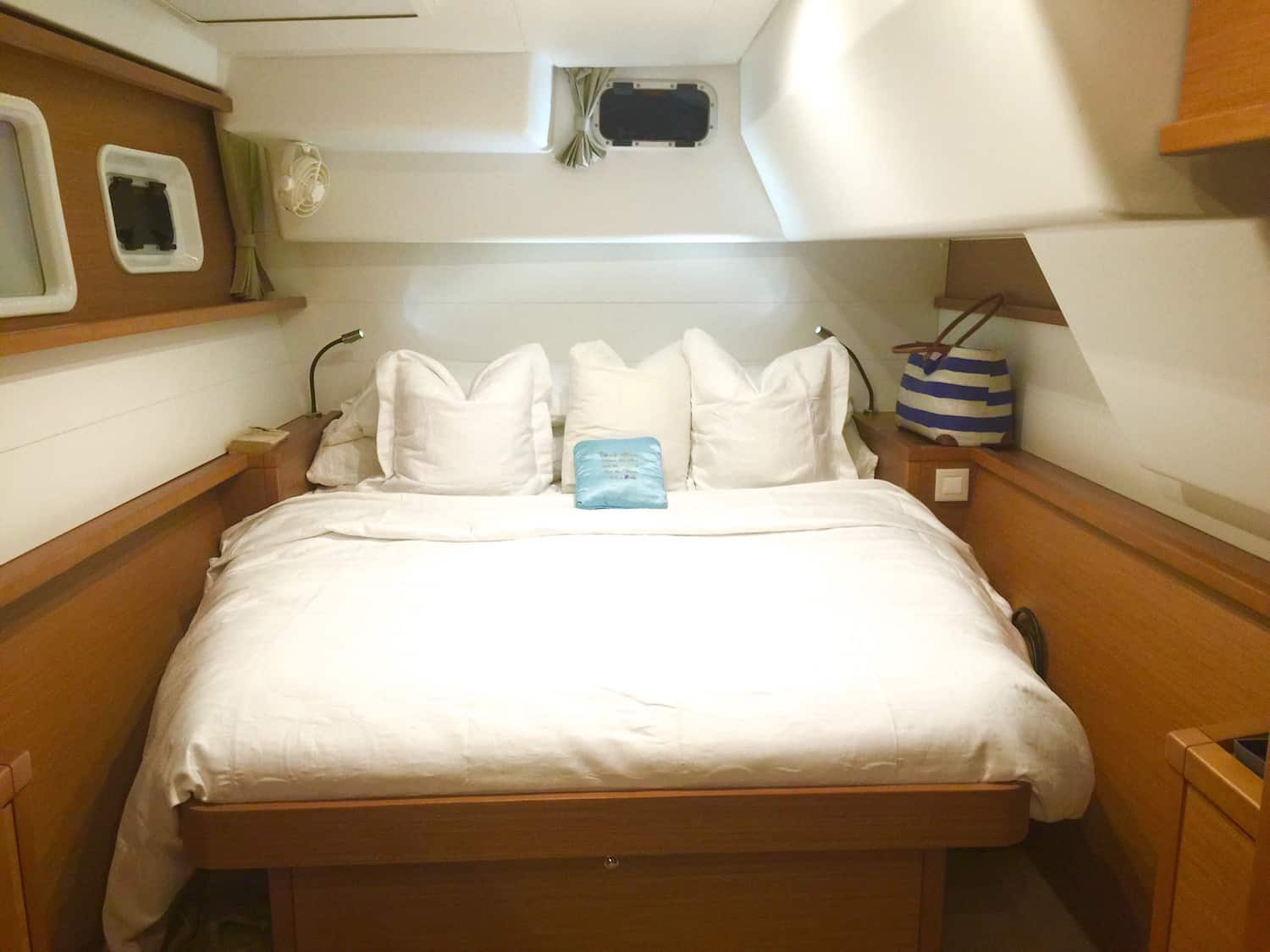
With Stephen’s height, headroom is a big deal for him and this cat has plenty of headroom throughout the boat including inside the cabins and in the heads. He is absolutely delighted that he finally doesn’t feel like a giant in an anthill anymore! Not feeling completely cramped for space and headroom is a luxury for people who live-aboard, so we are very pleased with this arrangement.
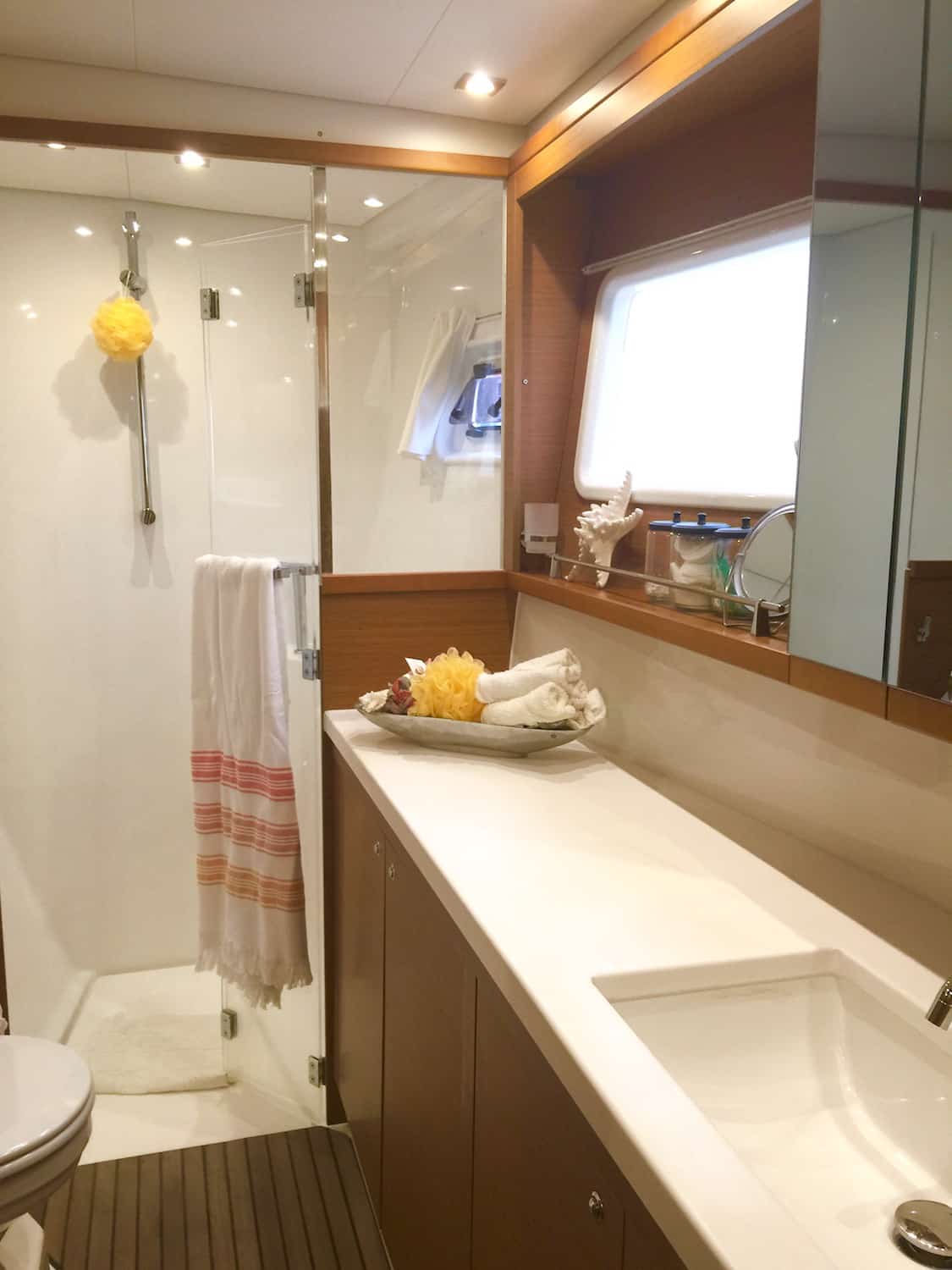
We converted our silent flush electric toilets (my only must-have upgrade) to be able to use either the fresh or saltwater flush. We prefer fresh water flush, which virtually completely eliminates any smell in the boat. Being able to convert to be able to use either supply, we have the option to use saltwater if we have to preserve the fresh water supply. The shower stall is humungous and the bathroom is well ventilated. In the separate bathroom stall, there is enough storage for a big linen closet and separate towel closet, besides the usual medicine cabinets. It’s absolutely great!
Master Stateroom
The only thing that can be a little annoying is the creaky floorboards, but that is typical of production sailboats.
Guest Cabins
The guest cabins are both a good size. The back cabin is slightly bigger with a walk-around bed and could easily have been the master cabin. I have laundry set up in the forward cabin and what a luxury! Laundry has been the bane of my life on board for more years than I care to remember. The Splendid washer unit is small, but efficient. I do a small load every 3 or 4 days to avoid a big washday. When at anchor, we run the watermaker and generator (which is in the chest locker in the forward cockpit and extremely quiet) during the wash cycle and it keeps up nicely. The guest bathrooms are a nice size, each with a separate bathroom and shower stall.
Given the choice, I would have preferred two bathroom stalls and a shared shower stall (Jack & Jill style). That would have allowed a lot more space in the guest cabins and bathrooms. But I do understand that everyone prefers their own bathrooms and showers so this is not a deal breaker.
Galley & Saloon
All in all, the galley is a great layout and fits all the criteria for my ideal galley . The fridge and freezer are a nice size.
The counter space right around the saloon is great to keep knick-knacks, books, baskets for fruits and vegetables, etc. The settee is comfortable and the dining table is interchangeable with the cockpit coffee table. The TV slides down into a concealed locker.
The concealed lighting as well as the overhead lighting are LED lights with fans in either side of the saloon.The panoramic windows make for beautiful views and the forward opening windows are wonderful for ventilation. We ordered the curtains which look elegant and work great to keep the saloon cool. The saloon and galley are well designed with very good use of space.
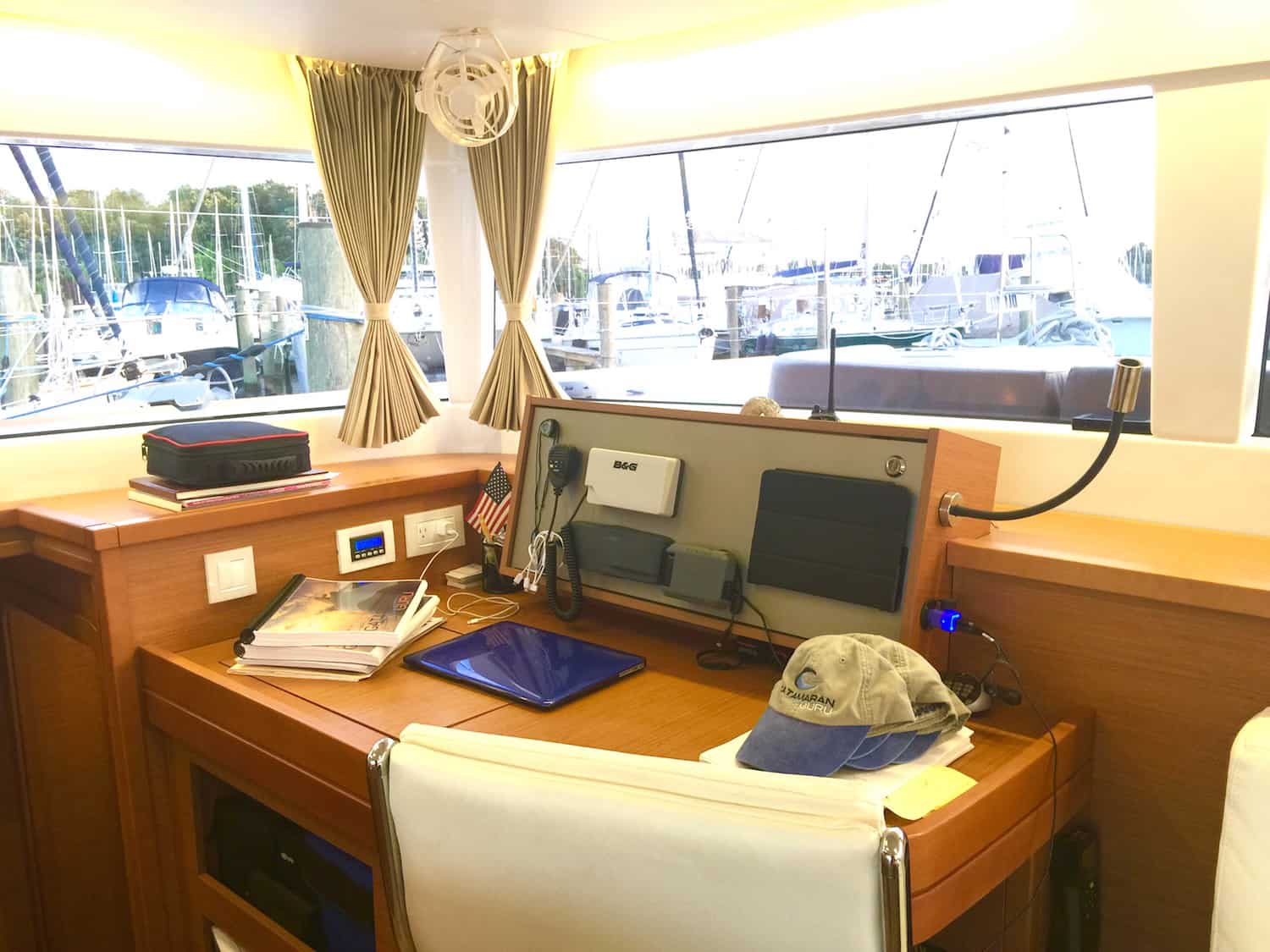
Interior Navigation Station
We really like the big, dedicated forward-looking navigation station inside the boat that doubles as Stephen’s office. We set up a dedicated laptop to download weather reports, send/receive emails, house our logbook, and use our charting programs. BUT this is also where he works on Catamaran Guru business daily. It’s a nice size and there is enough space to have a proper office chair with a backrest, which is awesome. We have our Ipad mounted here and connected to the B&G WiFi network that doubles as a repeater for the chart plotter upstairs.
Aft & Forward Cockpit Areas And Scoops
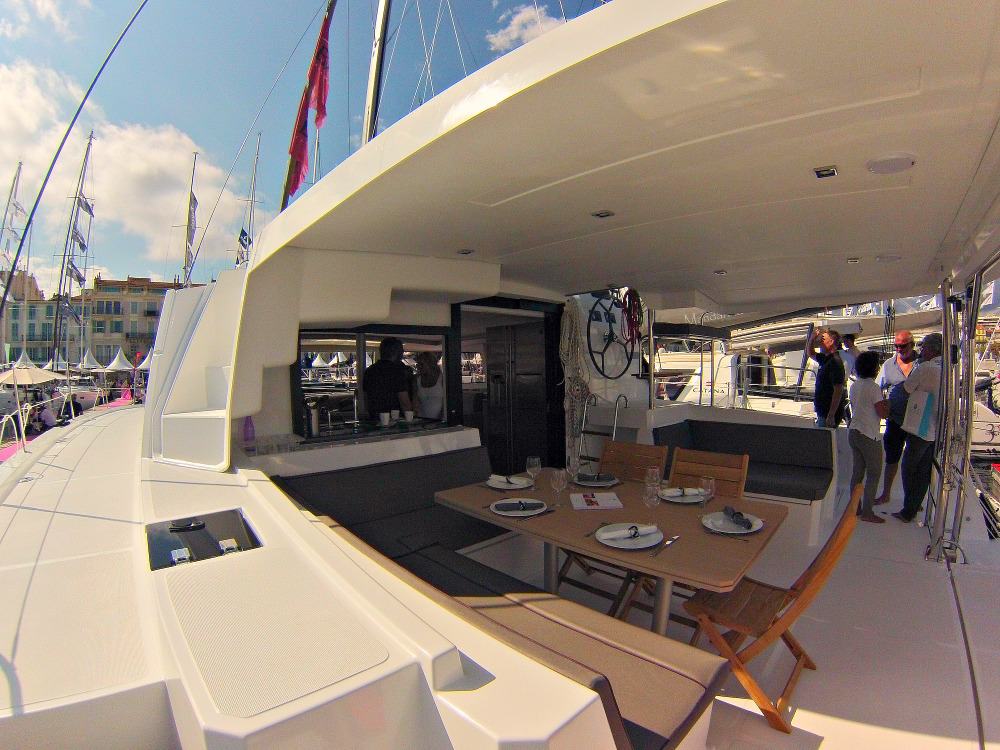
The huge sliding doors from the saloon and galley open up to the cockpit, which makes this one huge indoor/outdoor space and having the spacious cockpit, makes up for the “cramped” saloon area. It is absolutely great for entertaining (something we do a lot of).
I chose a coffee table for the cockpit instead of the big dining table, which is very easy to switch out with the big dining table. However, with the coffee table arrangement, the aft cockpit becomes a huge open outdoor saloon! The bimini over the cockpit is substantial and extends over the entire cockpit.
All the seating in the cockpit is covered by the Bimini and does not get wet when it rains. That’s a really nice feature, having lived on a boat with a Bimini just slightly too small and always having wet cushions inside the cockpit. We had the factory fit the Bimini shades which not only cool the entire boat down, but also provide privacy without blocking the breeze. We love everything about this area.
Aft & Forward Cockpit Areas And Scoops
The only negative about the aft cockpit is the absence of a cockpit fridge and there is no easy place to fit it in the SporTop version. The Flybridge version has a great outdoor “bar counter” with a fridge and icemaker fitted underneath. Unfortunately, the semi-raised helm position takes up that space. We will eventually have a fridge fitted, but for now we use the built-in cooler for drinks but it is not very efficient. Meanwhile, we have a domestic counter top icemaker that works great, so no need to fit an expensive icemaker.
The Lagoon 450S is a great live-aboard boat! It is fast, safe, and has enough living space to be comfortable. Also read our review of the Lagoon 450S: Exterior, Design, Construction & Sailing Ability .
Walk-through Video of the Saloon

Walk-through Video of the Master Suite

Estelle Cockcroft
Join our community.
Get the latest on catamaran news, sailing events, buying and selling tips, community happenings, webinars & seminars, and much more!
Leave a Comment Cancel Reply
Your email address will not be published. Required fields are marked *
Save my name, email, and website in this browser for the next time I comment.
Recent Posts

Top 10 Reasons to Sell (and Sail) Your Catamaran in Annapolis, MD
We have a new home in Annapolis! The office is located in Annapolis, Maryland
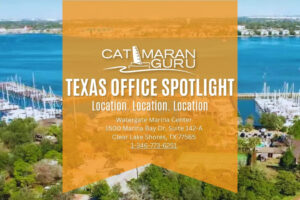
Top 10 Reasons to Sell (and Sail) Your Catamaran in Texas
Our Texas Office is located in the Watergate Marina Center in Clear Lake Shores,
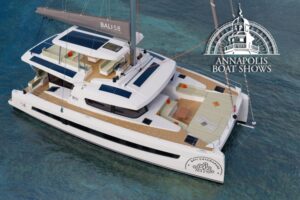
Annapolis Boat Show 2024
Meet with our team! Want to learn more about the Bali and Catana

Exploring the Catana OC 50 Catamaran: A Comprehensive Overview
The Catana OC 50 Catamaran, the latest addition to the Catana Ocean Class series,

For more than 30 years, we have been a part of the catamaran community and created Catamaran Guru™ to encourage and educate all the aspiring sailing out there. We understand the dream of traveling the world by catamaran and created a one-stop-shop to make that dream a reality for you.

- Stephen & Estelle
- Testimonials
Get Started
- Yacht Sales
- Used Yachts
- Charter Management
- Boat as Business Programs
- Seminars & Events
Catamarans: Advantages and the Downsides of a double-hulled
What are the advantages and the downsides of a catamaran.
Let’s talk boats – the classic monohull vs. the cool catamaran. Picture this: the monohull’s got one hull, a bit like a lone ranger with a hefty keel. But the catamaran? It’s like the dynamic duo, balancing on two hulls, with sails right in the middle. Easy peasy!
Why do folks go wild for catamarans, you ask? Well, size and stability steal the show. Catamarans boast more room above and below decks, making ’em a hit with vacationers. Plus, with two hulls, they stay as level as a boss, no wild tilts here! It’s a breezier sail, no wrestling with gravity.
Catamarans are the rockstars of the boating world! These double-hulled wonders bring the party to the high seas. Picture this: more space, less rocking, and a smoother ride – it’s like boating in luxury! With their wide stance, they’re as stable as a yoga guru on one foot. Plus, they’ve got speed that’ll make your hair stand on end! And let’s not forget the views – panoramic perfection from every angle. Catamarans are the ultimate waterborne playgrounds, delivering thrills, spills, and chill vibes all in one sleek package. So hop aboard and let the good times roll, because life on a catamaran is a non-stop fiesta!
And get this – they’re not as picky about water depth, so you can explore shallow spots that monohulls can only dream of. At anchor, you won’t be rockin’ and rollin’ all night. Oh, and did we mention the privacy? The two hulls keep things nice and separate. So, when it comes to boats, it’s safe to say, cats have got it all!
But since not everything is all good, below we have created a list of pros and cons of having a catamaran.
ADVANTAGES | Unlocking the Advantages of Catamaran Ownership
Spacious & stable.
Catamarans are very spacious and stable just like a houseboat, so they make great vessels for a vacation or even for those who want to live on a boat. Catamarans are characterized by their dual-hull design, which provides them with several distinct advantages in terms of space and stability.
- Spaciousness: Catamarans generally offer more interior and deck space compared to monohull boats of similar length. This is because the two hulls create a wider platform, allowing for larger cabins, living areas, and deck spaces. This extra room is particularly noticeable in the main living areas like salons, kitchens, and cabins.
- Stability: The wide hulls of a catamaran provide excellent stability on the water. They are less prone to heeling (leaning to one side) compared to monohull boats. This makes catamarans a popular choice for those who may be prone to seasickness or for those who simply prefer a more stable ride.
- Reduced Rolling: Catamarans are less likely to experience the rolling motion that is common on monohull boats. This is because the two hulls work independently, reducing the side-to-side motion that can be uncomfortable for some passengers.
- Shallow Draft: Catamarans often have a shallower draft compared to monohulls of similar size. This allows them to access shallower anchorages and coastal areas that may be off-limits to deeper-draft boats.
- Privacy: The dual-hull design of catamarans often allows for more private sleeping arrangements. Cabins are typically located in separate hulls, providing more individual space and privacy for guests.
- Entertaining Space: The wide deck area between the hulls, known as the trampoline, offers a fantastic space for socializing, sunbathing, or enjoying the scenery. It’s a unique feature that many catamaran enthusiasts appreciate.
Safety! Catamarans are safe for cruising and even safe for those adventurous people who want to cross the ocean. In fact, catamarans are often much safer than similarly sized yachts. Safety comes from increased motion comfort, great stability, speed, and excess buoyancy due to lack of ballast. Catamarans are good even in rough water.
- Escape Routes : Catamarans typically have multiple exit points, allowing for quicker and easier evacuation in case of an emergency.
- Redundancy : With two engines, two rudders, and often two separate electrical systems, catamarans have built-in redundancy. If one engine or system encounters a problem, the other can usually compensate.
- Bouyancy : In the event of hull damage, catamarans tend to stay afloat due to the inherent buoyancy of their multiple hulls. This provides more time for passengers and crew to take necessary safety measures.
- Visibility : The elevated helm positions on many catamarans provide excellent visibility for the captain, allowing them to see potential hazards or other vessels more easily.
Inside and outside steer
Many catamarans are designed with both inside and outside steering options. This provides flexibility for the captain to choose the most suitable steering position depending on weather conditions, visibility, and personal preference. So, captains have the option to steer from the inside during bad weather or when the water conditions are less than ideal. Keep in mind that the specific configuration may vary depending on the make and model of the catamaran
- Inside Steering : Catamarans typically have an inside helm station located in the main salon or cabin. This allows the captain to steer and navigate the boat from the comfort of an enclosed space, protected from the elements. Inside steering is particularly advantageous in adverse weather conditions or when additional shelter is needed.
- Outside Steering : Catamarans also have an outside helm station usually located on the deck, often near the aft (rear) of the boat. This provides a more open and unobstructed view of the surroundings, which can be beneficial for maneuvering in tight spaces, close-quarters situations, or when the weather is favorable.
Withstand high winds
If you are worried about windy weather, catamarans are also known for their excellent ability to withstand high winds. Catamarans are generally designed to withstand high winds quite well due to their inherent stability and aerodynamic profile. While catamarans are designed to handle high winds, it’s important for any boat, including catamarans, to be operated with caution in extreme weather conditions. The experience and skill of the captain, as well as adhering to proper safety protocols, are crucial for ensuring a safe boating experience in challenging weather. Additionally, all boats should be equipped with appropriate safety gear, including life jackets, navigation lights, and communication devices.
Here are a few reasons why catamarans are well-suited for handling high winds:
- Wide Beam : Catamarans have a wide beam (the distance between the two hulls), which provides a stable platform. This wide stance helps distribute the forces of the wind, reducing the likelihood of capsizing or heeling over.
- Low Center of Gravity : The weight of a catamaran is distributed lower in the water compared to a monohull boat. This low center of gravity contributes to stability in strong winds.
- Reduced Heeling : Catamarans are less prone to heeling (leaning to one side) compared to monohull boats. This means they maintain a more level position in high winds, providing a more comfortable and secure ride for passengers.
- Aerodynamic Design : Catamarans have a sleek and aerodynamic profile, which allows them to slice through the wind more efficiently than some other types of boats. This helps reduce the resistance to strong winds.
- Structural Integrity : Well-built catamarans are constructed with strong and durable materials. This ensures that they can handle the stresses and pressures associated with high winds.
Catamarans rely on the buoyancy of their two hulls as opposed to yachts, that only have a single hull. They can be in shallower water without losing stability or the ability to navigate. Yachts rely on a deeper draft to ensure the performance of the boat.
Less fuel? Yes, catamarans have less resistance to get on plane, which results in fuel economy. Their speed rises steadily and there is little to no spikes in fuel consumption. Catamarans are generally more fuel-efficient than similar-sized monohull boats due to their design characteristics. Here are some reasons why catamarans tend to be more fuel-efficient:
- Reduced Drag : The hull design of a catamaran creates less water resistance compared to a monohull. This means that it requires less power to achieve and maintain a given speed, resulting in lower fuel consumption.
- Lighter Weight : Catamarans are often lighter than monohulls of similar size. This means they require less power to move through the water, which in turn leads to improved fuel efficiency.
- Multiple Engines : Many catamarans are equipped with twin engines, which allows for better maneuverability and fuel efficiency. The ability to operate on a single engine at lower speeds can save fuel compared to running a larger single engine at higher speeds.
- Sail Option : Some catamarans are designed with sails in addition to engines. When conditions allow, using sails can significantly reduce fuel consumption, as the wind provides propulsion.
- Diesel-Electric Hybrid Systems : Some modern catamarans are equipped with advanced propulsion systems, including diesel-electric hybrids. These systems can optimize fuel consumption by efficiently managing power sources.
- Shallower Draft : Catamarans often have a shallower draft compared to monohulls, which allows them to access more fuel-efficient routes, such as shallower anchorages and coastal areas.
DISADVANTAGES | The Drawbacks of Catamaran Ownership
Stability for some is a no go.
For those that are into sailing sports, Catamaran yachts are not the most suitable. Why? Well, for the same reasons that make them great houseboats, stability. For that reason, half of the yachtsmen would never buy them. If there is too much sail exposed to the wind and the force of the wind is greater than the weight of the boat … wow… there it goes. The boat will literally trip sideways over the downwind side hull, capsizing. This can happen to small and large cats alike.
- Performance in Light Winds : Catamarans, especially those with a wider beam, may not perform as well in very light winds compared to monohulls. The reduced heeling and narrow hulls of monohulls can sometimes give them an edge in extremely light conditions.
- Difficulty in Heeling for Sailing Enthusiasts : Sailing purists who enjoy the challenge of heeling and working with the natural forces of the wind may find catamarans less engaging, as they tend to remain level even under sail.
The cost of keeping a catamaran in a marina can vary widely depending on factors such as location, marina facilities, boat size, and amenities offered. Marina fees are often based on the length of the boat. Catamarans, which tend to be wider than monohulls of similar length, may be charged a higher fee to accommodate their beam. Some yacht clubs may not even be suitable for catamarans.
Docking and Close Quarters Maneuvering
Docking a catamaran can present different challenges compared to docking a monohull due to its wider beam and dual-hull configuration. Catamarans often have twin engines and two separate hulls, which can make tight maneuvering in marinas or docking in narrow spaces a bit more challenging compared to monohulls.
- Width : Catamarans are typically wider than monohull boats of similar length. This can make it more challenging to navigate tight spaces in marinas or docking areas.
- Windage : Catamarans have a larger surface area exposed to the wind, which can make them more susceptible to being pushed off course during docking. Captains need to be aware of wind direction and strength when maneuvering a catamaran.
- Propeller Configuration : Catamarans often have twin engines, which can provide more precise control during docking. However, it also means the captain needs to be skilled at maneuvering with dual propulsion.
- Depth Perception : The separation of the hulls can make it harder to judge distances and angles when approaching a dock or slip. Captains may need to rely on experience and practice to develop a good sense of depth perception.
- Visibility : The position of the helm station on a catamaran can vary, but it’s typically higher and more centralized compared to monohulls. This can provide better visibility, but it may still take some adjustment for captains who are used to the lower vantage point of monohull boats.
- Tight Quarters : Maneuvering a catamaran in a crowded marina or in narrow waterways can be more challenging due to its width. Captains may need to plan their approach carefully and consider factors like current, wind, and other vessels.
The services can also be more expensive. Remember, there are two engines instead of just one. The cost of servicing a catamaran can vary depending on factors such as the specific make and model, age, size, and the complexity of its systems. In general, there are a few considerations that may affect the overall cost of servicing a catamaran:
- Twin Engines : Many catamarans have twin engines, which means there are two engines to maintain and service. This can potentially increase the cost of engine maintenance compared to a monohull with a single engine.
- Additional Systems : Catamarans may have additional systems and equipment, such as two steering systems, two electrical systems, and more plumbing. This can lead to potentially higher maintenance costs compared to monohulls.
- Specialized Knowledge : Some maintenance tasks for catamarans require specialized knowledge or expertise due to their unique design. This may result in higher labor costs or the need to hire technicians with specific catamaran experience.
- Sail Handling : If the catamaran is equipped with sails, maintaining and servicing the rigging, sails, and associated equipment may add to the overall cost.
- Anti-Fouling and Bottom Paint : Due to their wider beam, catamarans often have more hull surface area to cover with anti-fouling paint. This can lead to higher material costs for bottom maintenance.
- Insurance and Documentation : Insurance premiums for catamarans may be higher due to their higher value and unique characteristics. Additionally, documentation and registration fees may vary depending on the type of vessel.

It’s important to note that these potential drawbacks are subjective and may not be significant concerns for all sailors or boat owners. Ultimately, the choice between a catamaran and a monohull should be based on individual preferences, priorities, and the intended use of the vessel.
- Party Boat Charter News

What Is A Catamaran Sailboat? (And What It Looks Like)

Catamarans are increasingly popular for sailing and commercial use, but what sets them apart from monohulls and other multihulls?
A catamaran is a twin-hull boat with two equally-sized hulls placed side by side. They’re powered by engines, sails, or both—and they’re known for efficiency and speed. Catamarans are the most common kind of multihull boat.
In this article, we’ll go over the characteristics of catamarans and how to differentiate them from other types of boats. Additionally, we’ll cover the advantages and disadvantages of catamarans and compare them to trimarans and monohulls. We’ll also go over the most common types of catamarans and their uses.
We sourced the information in this article from marine design guides, boat identification resources, and the online boating community.
Table of contents
How to Spot a Catamaran
Spotting a catamaran is easy. Simply look at the hulls and count them. Catamarans have two hulls side by side and a relatively large gap between them where you can see light on the other end. Catamarans are distinct from trimarans, which have an additional hull between the two outer hulls.
How do Catamarans Work?
The principle behind the catamaran is simple. You can think of catamarans like cars and monohulls like motorcycles. Catamarans distribute their weight between hulls on either side, whereas monohulls utilize only one hull.
Evidently, cars are much more difficult to tip over and can hold much more weight. Additionally, cars are wider, as they have much more contact with the road. Catamarans work in a similar way, as they have a wide stance and contact with the surface on both sides.
Obviously, that isn’t the most precise comparison. But the basic principle is the same, and catamarans have a few notable benefits over monohulls.
Catamaran Vs Monohull
Catamarans are easy to distinguish from monohulls. A monohull is just a regular old boat with a single hull. The vast majority of boats and ships are monohulls. Catamarans have two hulls, which are usually sleek and narrow.
Here are some comparisons of catamarans and monohulls, along with the advantages twin-hull designs have over most single hull types.
Benefits of Catamarans
Catamarans have numerous benefits. The first is speed. Catamarans produce less drag than monohulls and thus can achieve excessive speeds both under sail and power. They don’t need to plane like monohulls to achieve these high speeds, and they use less fuel.
Catamarans are also much more stable than monohulls. They have a wide stance and shallow draft, and many waves and swells can travel between the hulls instead of below them. This effectively reduces an entire axis of movement and prevents catamarans from rolling excessively.
Drawbacks of Catamarans
Catamarans aren’t advantageous in every way, or else we wouldn’t bother building monohulls. The disadvantages of catamarans limit their use to niche commercial applications and high-end yachts. But what are the drawbacks of a twin-hull design?
Sailing catamarans don’t follow many of the traditional boat handling rules and characteristics that sailors pass down for generations. Some, such as hull speed limitations, are good to do away with—while others, such as responsiveness, are not.
Catamarans aren’t as quick to the helm or responsive as monohulls. There are some exceptions to this rule, but for the most part, you’ll get a lot more feedback from a single-hull vessel. Additionally, the large section of deck between the hulls of a catamaran is prone to pounding in rough seas, which is loud and uncomfortable.
Catamarans can sometimes be twice the width of an equivalent monohull sailboat, which can increase mooring fees and limit docking options.
The final major drawback of catamarans is a consequence of their stability. Traditional full-keel monohull sailboats have a very low center of gravity, which makes them roll in heavy seas but ensures a recovery.
Catamarans have a higher center of gravity, and they can’t right themselves after a knockdown. And though catamarans are less likely to roll, a severe list on a multihull is a much more serious concern than on a ballasted monohull.
Catamaran Vs Trimaran
Catamarans and trimarans are often lumped together, but they have very different design and performance specifications. Trimarans have three hulls, whereas catamarans have two.
Trimarans look a lot like catamarans from the side, but a quick glance at the bow or stern can set them apart. Trimarans are faster than catamarans, as they distribute their weight across three hulls instead of two. This helps them stay centered and reduces interference from pitching and rolling.
Catamarans are fast, but they lose out to trimarans when going head to head. However, catamarans are much less expensive to build and maintain and often have roomier cabins due to their larger hulls.
Types of Catamarans
There are numerous types of catamarans, and their uses vary widely. The catamaran is one of the oldest and most useful hull types, and some variants have been used for thousands of years. Here are the most common kinds of catamaran boats and their uses.
Sailing Catamaran
Sailing catamarans are probably what you think of when you hear the name. Sailing catamarans are sailboats with two identical hulls connected by a center deck. The largest sailing catamarans are spacious and stable vessels that are capable of serious offshore sailing.
Sailing catamarans have a number of notable advantages over monohulls. Monohulls, which are traditional sailboats with a single hull, are limited by a simple concept called hull speed. As the bow and stern wave of a monohull intersect, they cause drag which limits the top speed of the boat.
Catamarans are not bound by hull speed limitations, as they have two hulls. Catamarans can go twice or even three times as fast as similar monohulls and achieve excellent travel times.
Catamarans are also more stable than monohulls, as their wide stance and shallow draft reduce the effect of rough water. They don’t heel, as the force of the wind is counteracted by the double hulls. Additionally, modern sailing catamarans can ‘wave pierce’ by cutting through swells instead of riding over them.
Sailing catamarans come in many shapes and sizes. Small sailing catamarans, such as those used in races and regattas, are known for their speed and relative stability compared to light racing monohulls. Sometimes, they feature a smaller second hull for stability—these are called outriggers.
Sailing catamarans have spacious interiors thanks to the large cockpit between the hulls. This cockpit usually contains cooking and eating spaces, a place to sit, and a hallway between the hulls. The hulls usually contain living quarters and often mirror each other.
Power Catamarans
Power catamarans have an even greater variety than sailing catamarans. These vessels are used for everything from party platforms to ferries and patrol boats.
Power catamarans are a recent development, as engineers and marine architects now realize they have numerous hydrodynamic advantages over other hull types.
Catamarans are much more efficient than other hull types, as they have less drag relative to their size. Additionally, you can build a much larger catamaran with less material. This makes them popular for car and rail ferries, as builders can construct a very wide vessel with two small hulls rather than a narrower vessel with a large single hull.
Military and Commercial Catamarans
Even the military has found a use for the catamaran hull shape. The Spearhead class EPF is an expeditionary fast transport vessel designed for carrying capacity and speed. It has two sharp hulls and a huge cargo capacity.
The Spearhead class EPF is 337 feet long, which is about the same length as a WW2 escort destroyer. Yet despite having a similar length and displacement, these catamarans can travel more than twice as fast—43 knots, or nearly 50 miles per hour. Their great speed is a direct consequence of their catamaran hull type.
Power catamarans are also used as patrol and utility boats on a much smaller scale, with either outboard or inboard motors. The State of Texas uses catamarans to patrol shallow rivers and lakes. Texas Game Wardens utilize state-of-the-art aluminum catamaran patrol boats, which are fast enough to outrun most fishing boats.
There’s another form of power catamaran that you may not have considered. Pontoon boats are technically catamarans, and they’re enormously popular on lakes and rivers throughout the country. Pontoon boats aren’t known for speed, but they’re a great platform for a fun and comfortable outing.
Catamaran Houseboats
The final common type of power catamaran is the two-hulled houseboat. Houseboats don’t always use the catamaran hull type, but it’s common enough that most major manufacturers offer it as an option.
Catamaran houseboats have a few notable advantages over monohull designs. For one, they’re easier to build—especially when pontoons are chosen. Additionally, they’re better suited for navigating shallow water. These vessels can support more weight across their two hulls, offer increased stability, and they’re also efficient.
Why Aren’t Catamarans More Common?
With all the advantages listed in this article to consider, it may seem strange that the use of catamarans is still somewhat limited. At the end of the day, it comes down to economics—as monohull boats and ships are simply cheaper to build.
Additionally, catamarans have some distinct limitations. Monohulls have lots of storage space in their hulls and can carry thousands of tons of cargo safely in all weather conditions. Catamarans lack this space and low center of gravity, so they’re not ideal for transporting cargo past a certain point.
Additionally, monohulls work, and many people are reluctant to experiment with new designs when old designs work just fine. This rule applies to both large and small boats.
A large monohull sailboat can be constructed at low cost from stock plans and reliably sail almost anywhere. Very little complex structural engineering is involved, and looser tolerances reduce cost and maintenance requirements.
Related Articles
Daniel Wade
I've personally had thousands of questions about sailing and sailboats over the years. As I learn and experience sailing, and the community, I share the answers that work and make sense to me, here on Life of Sailing.
by this author
Learn About Sailboats
Most Recent

What Does "Sailing By The Lee" Mean?
October 3, 2023

The Best Sailing Schools And Programs: Reviews & Ratings
September 26, 2023
Important Legal Info
Lifeofsailing.com is a participant in the Amazon Services LLC Associates Program, an affiliate advertising program designed to provide a means for sites to earn advertising fees by advertising and linking to Amazon. This site also participates in other affiliate programs and is compensated for referring traffic and business to these companies.
Similar Posts

Affordable Sailboats You Can Build at Home
September 13, 2023

Best Small Sailboat Ornaments
September 12, 2023

Discover the Magic of Hydrofoil Sailboats
December 11, 2023
Popular Posts

Best Liveaboard Catamaran Sailboats
December 28, 2023

Can a Novice Sail Around the World?
Elizabeth O'Malley
June 15, 2022

4 Best Electric Outboard Motors

How Long Did It Take The Vikings To Sail To England?

10 Best Sailboat Brands (And Why)
December 20, 2023

7 Best Places To Liveaboard A Sailboat
Get the best sailing content.
Top Rated Posts
© 2024 Life of Sailing Email: [email protected] Address: 11816 Inwood Rd #3024 Dallas, TX 75244 Disclaimer Privacy Policy

39 Vital Tips, How To Sail a Catamaran!(For Beginners, The Fun and Safe Way!)
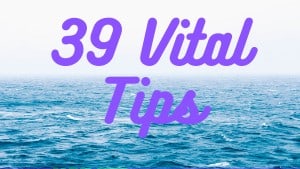
As an Amazon Associate, we earn from qualifying purchases. We may also earn commissions if you purchase products from other retailers after clicking on a link from our site.
In this article, I list many of the things that I have found significant about sailing a catamaran. The list is mainly aimed towards sailors transitioning from monohulls, but new sailors without prior experience will benefit from reading this before leaving harbor!
So what do you need to know before setting off in a Catamaran?
Catamarans Don’t Heel
Since catamarans have two hulls, the boat won’t heel over to its side while sailing; this means a ton of things! In part, it means that your ride will be faster, safer, more comfortable, etc.
Read this to understand the difference between monohulls (aka regular sailboats) and catamarans.
You will be faster on a Catamaran.
Since a catamaran has two hulls, it has less volume of the boat below the surface; this means less drag and higher speeds.
Want to know why cats are faster than other boats?
Maneuverability inside the Marina will be much more pleasant.
Although a catamaran will be more affected by winds due to its immense size, you can maneuver it as you would with a battle tank since it has two engines. That is doing a 360 turn without any movement forward or backward. This is an excellent way to enter and exit a marina.
Fuel costs will decrease.
Low drag means less energy needed to propel the boat; this is also true when running the engines. Compared to a monohull, the catamaran will draw less fuel.
Check out this article to understand why and how you can save fuel and instead spend your money on fun things!

If you get knocked over, you won’t get back up again (but at least you won’t sink!)
Catamarans have a terrible reputation for flipping over or capsizing as it is known to the people of the water. There is not much data to support that claim, and if you look at the available data, you would actually see that catamarans, in many ways, are safer than boats with only one hull.
Are catamarans safer than other sailboats?
Catamarans are wider and, therefore, safer.
Is it easier to push something to its side if it has a wide or a small base? Yepp exactly, the cat has a broad base and is, therefore, more stable (the short and easy explanation). There are numerous other factors to consider but a wider base means better stability!
Sign up for my mailing list to find out when my article on catamaran stability goes online
Catamarans will get you the ladies(or men, or cats, or whatever)
There is nothing more accurate on this list than the fact that a catamaran will get you more company, of the sort you prefer, than a monohull. The sailing is smoother; the space is plentiful, it’s basically made for having friends hanging out on the trampolines.
Speaking of trampolines, some myths say that they are made to reduce water onboard and enhance safety, but everybody really knows it’s a place for beautiful times with great friends ;)!
What are trampolines you say?
Because of the shallow draft, you can go places where monohulls can’t
If you are going to the Bahamas (or any other place where the water isn’t very deep), and believe me, you definitely want, then a shallow draft is almost as good of a friend as a cold beer on a sunny day.
A shallow draft means that your boat won’t be sticking very deep into the water, which significantly enhances the number of places you can explore, and it also makes it possible to get very close to the beach.
Be prepared to spend your dollars.
“A boat is a hole in the water where you throw your money” is what a wise friend of mine once told me in a marina in the Miami River. Little did I know at the time how true that statement was to become.
And if you’re on a catamaran… you will have two engines, larger sails, more surface area, more everything, and more everything means that more things will break and more items will have to be paid for
BUT! it also means more fun!
Finding a place to lift your cat out of the water might be trickier than you thought.
Unless you are on a smaller cat, such as the Gemini Legacy 35, you won’t be able to fit in a standard slip, and getting hauled up out of the water might not be possible everywhere.
Be prepared to pay a little extra, and make sure you ask before you!
In contrary to many beliefs, cats can be sailed single-handed.
Another myth is that catamarans are harder to sail than their monohull counterpart; this is simply not true in a general sense. If the boat is set up for shorthanded sailing, it will most certainly be easier to sail than its heeling and leaning sister ship, the monohull.
If you are interested in the skills needed to handle a large cruising catamaran I think you should check out my recommended books here.
No more sailing close to the wind
Since a cat doesn’t have a colossal keel, it tends to move sideways when sailing close to the point of wind. This means more drag, less transfer of movement in the direction of travel, and a less comfortable trip.
Usually, a cat needs to sail more of the wind than a monohull,
Downwind is your new best friend.
But on the other hand, going downwind or running downwind is, together with humans, your dog and red wine, your new best friend. This is where the catamaran will show its true potential.
It’s fast, smooth, and can take you around the world!
Sailing around the world.
Unless you are setting a world record, you will probably take the westward route around the globe. Sailing west means traveling with the prevailing winds and, you guessed it, perfect for a catamaran.
Interested in sailing around the world?
You have friends? Bring all of them!
Maybe not all, but many catamarans can fit many people; 6-10 people is not uncommon. Most of the space is on deck, but since there are two hulls, there are usually 2-4 berths fitting 4-8 people sleeping!
That’s a lot of friends, family, cats, or whomever you would want to bring.
Are you used to monohulls? Then you need to update your storm tactics!
Often, the boat will survive more hardship than the crew; it has happened more than once that a ship will be found only to have lost its team somewhere in the middle of the ocean.
A boat is only as good as its captain allows it to become; with poor sailing skills comes danger, and handling a catamaran IS different than handling another type of boat. Ensure you update your skillset, especially those considering rough weather, so that they are relevant when transitioning to a different kind of vessel!
Full speed with double engines
Exactly how fast you will be able to travel is, of course, dependent upon many factors. But something you can rely on is that more power equals higher speeds; in most catamarans, they employ two engines!
If you want to see a table of examples comparing sailing with one engine and two engines, check this out.
Hate swinging around on anchor? You better up your bridle-game
A well-balanced bridle will make the cat stay stable towards the wind; a poorly balanced bridle will tend to do a pendulum motion where the waves might push it one way only for the wind to push it back.
Want to better understand how a bridle work and how to make one?
Don’t stop before the beach; go all the way upon it.
Sailing in the Caribbean, we could often find ourselves wanting to explore a deserted island. We could either throw in the dingy or swim to shore; with a catamaran, you have a third option: “beach” it.
Beaching a catamaran means taking it all the way up to the shoreline so you can step off onto a beautiful beach without even getting your toes wet!
Check this out to understand what beaching a catamaran is like.
The cat is enormous; why not live on it!
A monohull’s size is usually what takes the fun and comfort out of the vacation, but with more space and your own berth/room, the ability to stay comfortably for more extended periods increases.
You might even have a hard time to get people of your boat 😉
How to sail faster upwind than a longer monohull
Yes, it is usually true that a mono can go closer to the wind than your average cat; this means a shorter distance from point A to point B if traveling directly towards the wind.
But, and its a big but (one T) catamarans on average are faster, that means even though they might have to travel a longer distance, they will usually show up at the destination faster than its mono counterpart.
Especially if we are talking longer distances, let’s say around the world or Atlantic crossings, then there is no discussion over which is the fastest.
Check this list of catamaran speeds to learn more .
No more merry-go-round while at anchor
One of the things I hated the most when living and sailing on a monohull was getting seasick when not even sailing. The wind pushing you one way and the waves the other makes for an incredibly potent mix of sea-sickness.
On a cat, that’s not really an issue; yes, it will swing around a little, it might even swing a little extra since it catches a lot of wind, but it is not going to roll! Which is a huge deal!
How to become a better sailor
Everybody says that to become a good sailor, you must get out there earn your experience, but without the correct feedback and conclusions, you might be at risk of sub optimizing your skillset.
This means that unless you bring someone very experienced, you might create habits that only work under the circumstances you have practiced, that is, calm weather close to shore.
What you need is someone to tell you, “that works today, but it will get you into trouble in X and Y situations,” those tips are vital! Get the opinion of someone you trust, whether it’s online or an actual person tagging along!
The American sailing association has a pretty cool book about handling large catamarans, check it out here.
Sailing single-handed
Catamarans, when set up correctly, can be sailed single-handed or shorthanded. Some of the changes you’ll have to make include;
- Get an autopilot
- Make sure your lines go all the way to the cockpit, so you don’t have to leave your GPS, radar, etc.
- Remove things that are obstructing your view; there are only two eyes on board!
- Ensure you have enough physical power to handle the winches, sail, etc., if you don’t? Hit the gym; if that doesn’t work, buy electric winches.
- Practice sailing single-handed(but have a passive crew tag along for safety) and figure out what else you need.
More info on how to sail single-handed
Anchoring your cat at sea
One way to do this is to use a sea anchor, basically a parachute in the water that breaks your movements. more on sea anchors here
The sea depth in the middle of an ocean can be thousands of meters, so bringing that much anchor chain doesn’t really work. What you would do is drift under control, that is, situating the boat in a comfortable position, and that doesn’t make you drift too much in the wrong direction.
Picking up a mooring ball
This is a common question, but I’m not sure why it intimidates people as much as it does. It is probably the easiest way to anchor of them all.
Basically, what you want to do is;
- Prepare your bridle
- Head into the wind slowly, approach the ball on the same side of the centerline as your friend, who will later pick it up.
- Take into consideration the drift occurring by the wind and current.
- Use a boathook, stick, or whatever to pick up the line from the mooring ball and attach it to the center of your bridle.
- Put the boat in reverse, give it a little throttle, and tension the lines so that you can trust your anchoring
- Voila, you’ve picked up your first mooring ball!
- How to make your useless friend useful onboard
Turn that useless friend into and a vital asset!
The best way to prepare for troublesome situations is to think through what problems may happen and what you want to do when it happens. What you do is you bring that diamond in the rough that is your friend onboard, you discuss a few situations, you tell her what you want her to do and when.
Then you practice, not full-on, but you will show your friend how things are done; let’s say you want help with anchoring. Do a walkthrough of the process where you let your, now a little bit shinier diamond, handle the ropes and respond to commands. Offer honest and concrete feedback and let them succeed in the task.
Once you feel comfortable with your friend’s actions, you have accomplished two things, you have taught your friend a new skill, and you have acquired a crewmember! Glorious!
Bring your real best friend, the dog (or cat, for you weirdos 😉 )
Heeling is not only tough on us humans! On a cat (the boat), a cat(the animal) can move around more safely, and there is a smaller chance of it falling off. Many chose to keep the pet inside the boat, but I really do believe that your pets should also be able to enjoy the beautiful sailing and weather!
Prepare to see nothing.
I don’t mean beautiful islands and tropical beaches; you’ll see plenty of that! I mean, seeing where you are going, a cat has a lot of stuff in front of you(such as that glorious interior space), so if you’re used to your good old monohull, you might find it difficult at first to get at a good view of where you’re going. Especially when docking or in a marina.
Catamaran Sailing Techniques: Everything you need to know – Yachting World
The wind will give you a hard time.
A catamaran is basically a big box with floating sleds; boxes are not famous for aerodynamics. This box-shaped floater will catch a lot of wind and will make slow speed movements, such as docking, a little bit trickier.
To the rescue comes double engines with separate controls making it possible to do 360 turns on the spot and super small unballasted keels called centerboards.
Spring of the dock will be your new way of life.
Higher on the list, we looked at the box-shaped floating thing that is a catamaran and how much the wind affects it. This is also true when exiting a dock; all that force will make it impossible to head out if the wind blows towards the dock.
Spring off the dock to the rescue! This method uses simple physics of leverage to make your stern move away from the dock even though the wind and waves are pushing you back in.
Sign up to my mailing list for information on when that article is published!
Stop turning the wheel and start using your throttles.
The downside of a shallow draft is that it won’t have much that stops you from moving sideways with the wind; the upside of having a catamaran is that you have two engines!
When moving at slow speeds, let’s say docking, you dont have much “grip” on the water and not much water passing around the rudders. This makes handling a catamaran in the same way as a monohull very difficult.
Instead, the preferred method is to put the rudder at center position and turn by offsetting the throttle; higher throttle on your right engine will make you go left and vice versa. This allows for 360 spins and precis handling in tight spaces! Pretty neat, I would say.
Get used to that hellish banging noise!
Bridge deck clearance is a real thing on a catamaran, and if you’re on a smaller sized or just poorly built, you’ll get more banging than your teenaged self ever wished for(pun intended)!
So bridge deck clearance is the distance between the water and the lowest part of the boat between the hulls.
This is the part where the water will pass between the hulls, and under some circumstances, let’s say big enough waves, water will crash and hit the underside—making not only a lot of noise but also vibrations throughout the boat.
Bring all that crap that you thought you would have to leave on land.
“sailing is living the simple life and bringing only what you need,” someone said to me once; screw that! 🙂 On a cat, there is so much space that you’ll be able to bring almost anything that you want and need.
People bring everything from scuba gear(including a system to fill up the oxygen tanks) to washing machines!
Even though I consider myself to be a simple man when it comes to stuff (i live in a van, as some of you know 😉 ) I can totally understand the beauty of bringing a lot of creature comfort on board.
Shallow draft, yes, but how deep is the water, visual checks.
Before sailing the Bahamas, I would hear of stories almost every day of boats that went aground and either got stuck or wrecked their ships. I was terrified but once underway and a couple of months in, I couldn’t really understand how it could happen.
So I started looking into the information about different accidents that I could find, and something struck me, common sense isn’t that common…
I realized that many sailors trusted their GPS or maps more than they trust their own eyes. I could easily understand that the people who went aground were the ones that did not do visual checks when entering or moving through a shallow section.
When storms roll in, the seafloor, especially if made of sand, shifts, and depths, is rarely accurate on a map, and if your sailing with only a few feet to spare, you better keep an eye out!
If monohulls give you feedback like your mom at family dinner, then a catamaran is your dead budgie.
Maybe that title is a bit of a stretch and only applies to my family; if so, sorry about that, let’s carry on!
So when the wind hits the sails on a monohull, it leans to the side, everybody gets seasick, and you want to go home, that is not all bad! That same feeling also gives the captain a sensation of how much force is acted upon the sails, something vital if you want to stay afloat.
The issue with a catamaran is that it does not offer feedback to the helm in the same manner; there is nothing dangerous about it; it is just different. The problem occurs when you expect feedback in the shape of leaning before you start reefing.
If you wait for that, you’ll soon find yourself in trouble! The easiest and safest way is to use a “wind speed rule of thumb,” basically a standard operating procedure for putting the reefs in based on apparent wind. Once the wind speed hits X m/s, you put your first reef in; when the speed hits Y m/s, you put the next reef in, and so on.
See a squall coming? Reef early!
A gust of wind? Head down, not up!
I know, I know, I compare monohulls and cats all the time… and yes, here’s one more comparison!
Some of you single-hull-people out there might be tempted to head upwind if there’s a gust hitting the sails, I would rethink that strategy and recommend you train your reactions to do the opposite!
Heading upwind(on a cat) during a gust will increase the risk of capsizing (flipping over is extremely rare, but if you’re ever going to pull it off, here’s your chance!).
Gybe like Barry White would
I’m not sure we see the same things here, but what I’m trying to say is that you want to take it nice and smooth on the transition from one side to the other.
Tighten in the sheet, pull the mainsail to the center and slowly pass from one side to the other; this will decrease the wear and tear and reduce the risk of injuries from the beam swinging like a
Owner of CatamaranFreedom.com. A minimalist that has lived in a caravan in Sweden, 35ft Monohull in the Bahamas, and right now in his self-built Van. He just started the next adventure, to circumnavigate the world on a Catamaran!
Leave a Reply Cancel reply
Your email address will not be published. Required fields are marked *
Save my name and email in this browser for the next time I comment.
Recent Posts
Must-Have Boat Gear for Catamaran Sailors!
Sailing is probably the most gear-intensive activity I've ever done; there are so many decisions to be made about what gear to buy now, for tomorrow, and what to definitely never buy. The gear on...
6 Best Trailerable Trimarans For Bluewater and Coastal Sailing
Having a boat costs a lot of money, even when you are not using it, marina fees, etc. And once it is in the water most sailors never go very far from their "home marina" and sailing will be somewhat...


Cruising the Seas in Splendor: Unveiling the Majesty of Catamaran Boats
Catamaran boats have been gaining popularity in recent years due to their unique design and numerous benefits. These boats are built with two hulls instead of one, which provides a more stable and comfortable ride.
They are also faster and more fuel-efficient than traditional monohull boats, making them a popular choice for both recreational and commercial use.
One of the biggest advantages of catamaran boats is their stability. The two hulls provide a wider base, which makes them less likely to tip over in rough waters. This stability also makes them a great choice for those who are prone to seasickness or who want to enjoy a more comfortable ride.
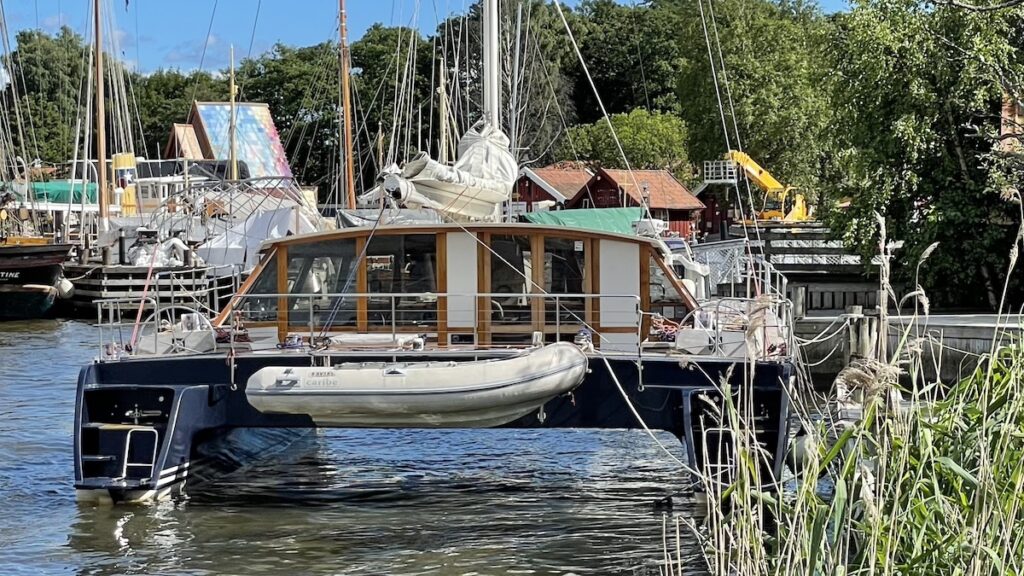
Additionally, the shallow draft of catamarans allows them to access shallow waters that are off-limits to larger boats, making them ideal for exploring secluded coves and beaches.
Overall, catamaran boats are a great choice for anyone looking for a stable, comfortable, and efficient vessel for both recreational and commercial use.
With their unique design and numerous benefits, it’s no wonder that they have become increasingly popular in recent years. Whether you’re looking to sail the open seas or explore secluded coves, a catamaran boat may be the perfect choice for your next adventure on the water. Now let’s take a more in-depth look at this type of leisure craft.
What is a catamaran boat?
A catamaran boat is a type of watercraft that features two parallel hulls connected by a deck or platform. This design provides stability, speed, and efficiency on the water, making it a popular choice for various purposes such as leisure cruising, racing, fishing, or even luxury yachting.
Catamarans have been around for centuries but have gained significant popularity in recent years due to their unique advantages over traditional monohull boats. One key characteristic of catamaran boats is their wide beam or width compared to monohulls.
This attribute allows for excellent stability and better weight distribution, providing passengers with a smoother ride even in rough waters. The wider deck layout of catamarans also offers more space for recreational activities and amenities such as sunbathing areas, dining spaces, and storage compartments.
Whether it’s a power catamaran designed for speed and efficiency or a pontoon-like sailing catamaran built for comfort and relaxation, these boats provide ample room for both functionality and comfort. Catamarans are available in various types to cater to different boating preferences.
Power Catamarans are known for their ability to navigate through the water swiftly while maintaining stability. Their twin-hull design reduces drag and allows them to maintain higher speeds with less fuel consumption compared to traditional powerboats.
On the other hand, Sailing Catamarans focus on harnessing wind power efficiently with their multiple sails and rigging systems . When considering purchasing or renting a catamaran boat, it’s important to know that different brands offer different features tailored to specific needs.
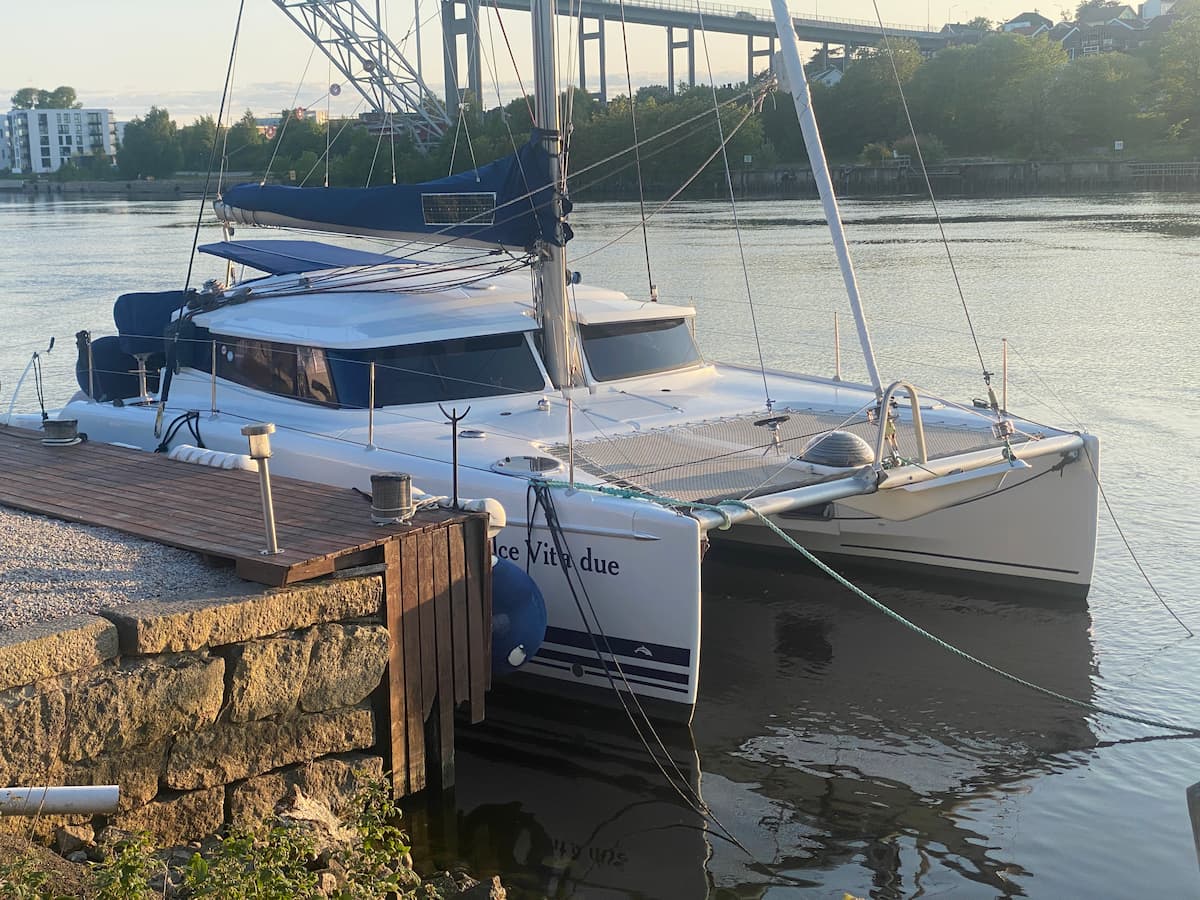
Luxury catamarans often come equipped with high-end amenities like spacious cabins, swimming pools, gourmet kitchens, and luxurious interiors designed for an extravagant experience on the water. Some popular luxury catamaran brands include Lagoon Catamarans and Leopard Catamarans.
For those looking at smaller options suitable for day trips or weekend getaways, there are various small catamaran brands to explore. These compact vessels often prioritize efficiency and ease of handling while providing enough space for a small group of people.
They are perfect for exploring coastal areas, shallow waters, or inland waterways. Catamaran boats offer a unique and versatile boating experience with their twin-hull design, wide deck layouts, and various types tailored to specific needs.
They provide stability, speed, and ample space for recreational activities or luxurious amenities. Whether it’s the power and efficiency of a racing catamaran or the comfort and relaxation of a luxury catamaran, these vessels have become increasingly popular in the boating world as they redefine the way we navigate through water.
Design and Structure of Catamaran Boats
Catamaran boats are fascinating watercraft known for their unique design and structure. The foundation of their design lies in the arrangement of two hulls, parallel to each other, connected by a platform or bridge-like structure. This configuration sets them apart from traditional monohull boats and brings forth a range of advantages that I will explore later in this article.
The design and structure of catamaran boats allow for superior stability on the water. With two hulls instead of one, catamarans have a wider beam, providing excellent balance and reducing the chances of capsizing.
This stability makes them an ideal choice for those who prefer smooth sailing experiences without sacrificing safety. Furthermore, the wide beam also contributes to maximizing living space on board.
Catamarans often boast spacious interiors that can accommodate more passengers comfortably, making them popular choices for luxury cruises or large groups seeking adventure on the open seas. Small catamaran brands often focus on enhancing space utilization while maintaining efficiency.
The deck layout of catamaran boats is carefully designed to ensure efficient movement and ease of handling. Whether it’s Power Catamarans used for leisurely activities or Racing Catamarans built for exhilarating competitions, their respective deck layouts are tailored to meet specific needs.
Another integral component is the rigging system utilized by catamarans equipped with sails. These systems consist of masts, booms, and ropes designed to optimize sail control.
The aerodynamic shape of catamaran sails contributes to increased speed and maneuverability when compared to other types of sailboats . Luxury Catamarans often incorporate innovative features such as spacious sun decks, swimming platforms, jacuzzis, or even onboard movie theaters.
These enhancements provide an indulgent experience for those seeking high-end yachting adventures. It is worth mentioning Pontoon Boats as they share some characteristics with catamaran designs due to their multihull configuration.
However, it is important to note that pontoon boats are generally used for calmer inland waters, while catamarans excel in open ocean conditions. The design and structure of catamaran boats are a testament to their engineering ingenuity.
The parallel hulls, coupled with the carefully designed deck layouts and rigging systems, contribute to their stability, speed, and spaciousness. As a result, catamaran boats have become popular choices for those seeking comfortable and exhilarating sailing experiences on both leisurely excursions and competitive races.
Types of Catamaran Boats
When it comes to catamaran boats, there exists a wide range of types catering to diverse needs and preferences.
These vessels are designed and built with specific purposes in mind, allowing enthusiasts to choose one that suits their desired activities on the water. From sailing catamarans to luxury powerhouses, there is a catamaran for every taste.
Sailing Catamarans
Sailing Catamarans are perhaps the most iconic among all types. These boats utilize the power of the wind with specialized catamaran sails to propel themselves through the water.
Sailing catamarans are known for their stability, speed, and comfortable sailing experience. They often feature spacious deck layouts with ample seating areas and come equipped with advanced rigging systems for efficient control.
Power Catamarans
On the other end of the spectrum are Power Catamarans. These boats prioritize speed and maneuverability over wind propulsion.
Powered by engines instead of sails, these vessels offer a thrilling experience on the water. Power catamarans often have sleek designs and can reach impressive speeds while maintaining stability due to their dual-hull configuration.
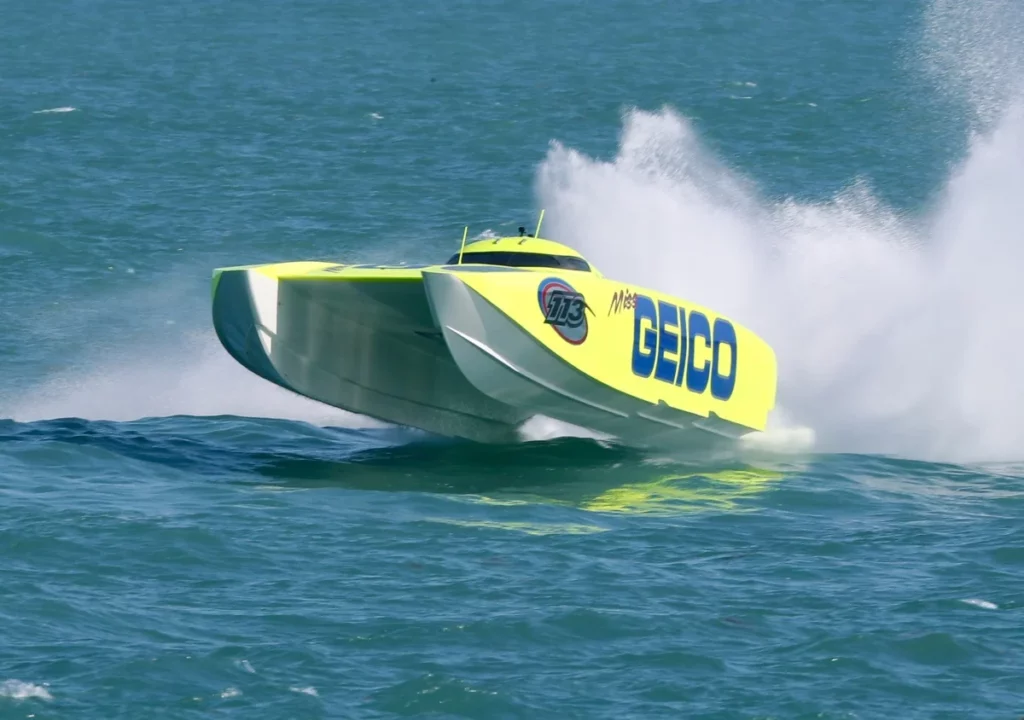
Racing catamarans
For those seeking high-performance vessels built for racing, Racing Catamarans fit the bill perfectly. These lightweight and agile boats are designed specifically for competitive sailing events where speed is paramount.
Racing catamarans feature aerodynamic hulls, advanced rigging systems, and optimized sail plans that allow them to glide effortlessly through the water at incredible speeds.
Luxury Catamarans
Luxury Catamarans cater to those who seek premium comfort and opulence on their seafaring adventures.
These high-end vessels combine exquisite interior design with top-of-the-line amenities such as spacious cabins, luxurious lounges, gourmet kitchens, and even lavish entertainment systems. Luxury catamaran brands focus on providing an unparalleled level of luxury while still ensuring superior performance on the open water.
Small Catamaran Brands offer compact options that are suitable for various recreational activities such as fishing or cruising on smaller bodies of water. These catamarans often feature simpler deck layouts with ample seating for a few passengers.
Smaller catamaran brands typically focus on affordability and versatility, making these vessels accessible to a wider range of boating enthusiasts. The types of catamaran boats available cater to a diverse range of preferences and activities.
Whether one seeks the thrill of sailing, the power of engines, the excitement of racing, or the luxury of opulent interiors, there is a perfect catamaran waiting to be discovered. From sailing catamarans with advanced rigging systems to luxury powerhouses and racing machines, these vessels offer an unforgettable experience on the water for enthusiasts of all kinds.
Advantages of Catamaran Boats
Catamaran boats offer a multitude of advantages that make them a desirable choice for boating enthusiasts. From stability to comfort, these vessels have proven themselves to be a worthwhile investment.
One prominent advantage of catamaran boats is their exceptional stability on the water. The dual-hulled design provides a wide beam, ensuring superior balance and reducing the risk of capsizing, even in rough seas .
This stability factor makes catamarans an excellent choice for those prone to motion sickness or seeking a smooth sailing experience. Another advantage lies in the generous living space and comfort offered by catamaran boats.
With two hulls instead of one, there is ample room for cabins, lounges, and other amenities. Luxury catamarans are particularly renowned for their spaciousness and lavish interiors, providing an unparalleled level of comfort during extended trips or liveaboard experiences.
Catamarans also shine when it comes to fuel efficiency. Compared to other types of vessels like powerboats or pontoon boats , catamarans generally require less horsepower to achieve similar speeds due to their lightweight construction and reduced drag in the water.
This efficiency translates into lower fuel consumption, making them an environmentally friendly option as well as more cost-effective over time. Furthermore, catamaran boats boast impressive sailing performance due to their unique rigging system and deck layout.
The wide beam allows for greater sail area compared to monohull sailboats while maintaining excellent stability. Sailing catamarans can harness the wind more efficiently with larger sails that propel them forward swiftly and gracefully through the water.
Racing enthusiasts are particularly drawn to the advantages offered by racing catamarans. These specialized vessels are designed with cutting-edge technology and aerodynamics that result in exceptional speed on the water.
The multi-hull structure allows racing catamarans to skim across waves with minimal drag while maintaining superb maneuverability. Additionally, it is worth mentioning that catamarans are available in a wide range of sizes and configurations, catering to diverse preferences and needs.
From small catamaran brands that focus on affordability and simplicity, to high-end luxury catamarans designed for opulent cruising, there is a vessel suited for every boating enthusiast. The advantages of catamaran boats are truly remarkable.
Their stability, spaciousness, fuel efficiency, sailing performance, and diverse range of options make them an attractive choice for both leisurely cruising and competitive sailing. Whether you are a seasoned sailor or a recreational boater looking for comfort on the water, exploring the offerings from various catamaran brands is sure to reveal the perfect vessel to suit your desires.
Disadvantages of Catamaran Boats
While catamaran boats offer numerous advantages, it is important to acknowledge that they also come with a fair share of disadvantages. These drawbacks, although not deal-breakers, should be considered when making a decision about purchasing or sailing a catamaran.
Firstly, one notable disadvantage of catamaran boats is their wide beam . Due to their dual-hull design, catamarans tend to have a larger width compared to monohull vessels.
While this provides stability and ample space for accommodation and deck layout, it can present challenges in terms of docking and maneuvering in tight spaces. The wider beam requires special attention when navigating marinas or crowded anchorages as it may limit access to certain berths or docking areas.
Secondly, the increased windage caused by the wider beam makes catamarans more susceptible to being affected by strong winds . The larger surface area exposed to wind can result in greater resistance and difficulties in steering during adverse weather conditions.
While modern catamaran designs have addressed this issue through improved hull profiles and efficient rigging systems, it remains an inherent characteristic that requires careful consideration. Another disadvantage lies in the potential limitations of shallow draft capabilities.
Although some catamarans are designed with retractable keels or daggerboards that enhance their ability to navigate shallow waters more effectively than monohulls, there are still limitations depending on the specific model and size of the boat. This can restrict access to certain anchorages or require cautious navigation in areas with potentially shallow shoals.
Additionally, compared to monohulls, catamarans may be perceived as less suitable for racing purposes due to their increased weight and form drag caused by their wider beam. While high-performance racing catamarans exist within specialized classes such as Formula 18 or A-Class Catamarans, they are not as widely available as monohull racing sailboats.
Therefore, those seeking competitive racing experiences may need to explore other options outside the realm of catamaran sailing. Cost can be a significant disadvantage for those considering purchasing a catamaran.
Catamarans, especially when compared to smaller monohull or pontoon boat options, tend to be more expensive due to their larger size and increased construction materials. Luxury catamarans with high-end fittings and finishes can command even higher prices.
Additionally, maintenance costs for catamarans may be higher than for monohulls due to the dual-hull structure and the complexity of certain systems such as rigging and sails. While catamaran boats offer numerous advantages such as stability, spaciousness, and efficient sailing capabilities, they also come with several disadvantages that should not be overlooked.
The wider beam affecting maneuverability and wind resistance, potential limitations in shallow draft capabilities, reduced availability of racing options compared to monohulls, and the higher overall cost are aspects one must consider when evaluating whether a catamaran is the right vessel for their needs. Understanding these drawbacks will enable potential owners or sailors to make informed decisions regarding this unique style of boat.
The Cost of Catamaran Boats
The Cost of Catamaran Boats When considering the purchase of a catamaran boat, it is crucial to delve into the cost aspect. Catamaran boats come in various sizes, designs, and configurations, leading to a wide range of prices.
The price of a catamaran boat can be influenced by factors such as brand reputation, size, construction materials, added features, and market demand. Whether you are looking for small catamarans brands or luxury catamarans capable of crossing oceans in style, there is a price range to accommodate every buyer’s preferences and budget.
Small catamaran brands usually offer more affordable options for those starting their journey into the world of multi-hull sailing. These compact vessels often range from 20 to 35 feet in length and are designed for day trips or weekend cruising.
With simpler deck layouts and fewer amenities compared to larger models, these smaller catamarans typically have lower price tags starting from around $50,000 for used boats and reaching up to $300,000 for newer models. On the other end of the spectrum lie luxury catamarans tailored for discerning buyers seeking opulent accommodations and top-of-the-line features.
These floating wonders can stretch up to 80 feet or more in length and boast sophisticated interiors that rival five-star hotels. With high-end amenities such as multiple en-suite cabins with private bathrooms, spacious lounges outfitted with modern entertainment systems, gourmet kitchens with high-quality appliances, and expansive deck spaces perfect for hosting extravagant parties or sunbathing sessions; it’s no wonder these luxurious vessels command hefty price tags ranging from several million dollars upwards.
For those interested in racing catamarans built specifically for performance-oriented sailing competitions; prices vary depending on the level of customization desired. Racing catamarans prioritize lightweight materials like carbon fiber constructions which contribute to enhanced speed capabilities on water surfaces.
Buyers should expect prices upwards of several hundred thousand dollars for professionally designed racing catamarans that incorporate cutting-edge rigging systems, advanced catamaran sails, and specialized hull shapes to maximize speed and maneuverability. Power catamarans, while sharing the multihull design with their sailing counterparts, offer an entirely different boating experience.
These motorized vessels combine stability and fuel efficiency to provide an enjoyable cruising experience for those who prefer to explore the open waterways without relying on wind power. The cost of power catamarans can vary widely depending on factors such as size, engine specifications, interior amenities, and brand reputation.
Entry-level power catamarans start around $200,000 and can reach multi-million-dollar price tags for larger models equipped with luxurious features. Ultimately, when it comes to the cost of catamaran boats; buyers need to consider their specific requirements and desired features.
It is advisable to thoroughly research different brands in order to find a vessel that best fits both budget constraints and individual preferences. Whether one seeks a small-budget adventure on a compact pontoon boat or a grandiose voyage aboard a high-end luxury catamaran ; the market offers ample choices catering to every taste and financial capacity.
Popular Brands of Catamaran Boats
When it comes to popular brands of catamaran boats, the market offers a wide range of options to suit various preferences and needs. From small catamaran brands specializing in sailing catamarans to well-established manufacturers producing luxurious power catamarans, there is something for everyone.
This section will delve into some of the renowned catamaran brands, each with its unique features and offerings. One notable brand in the world of catamaran boats is Lagoon .
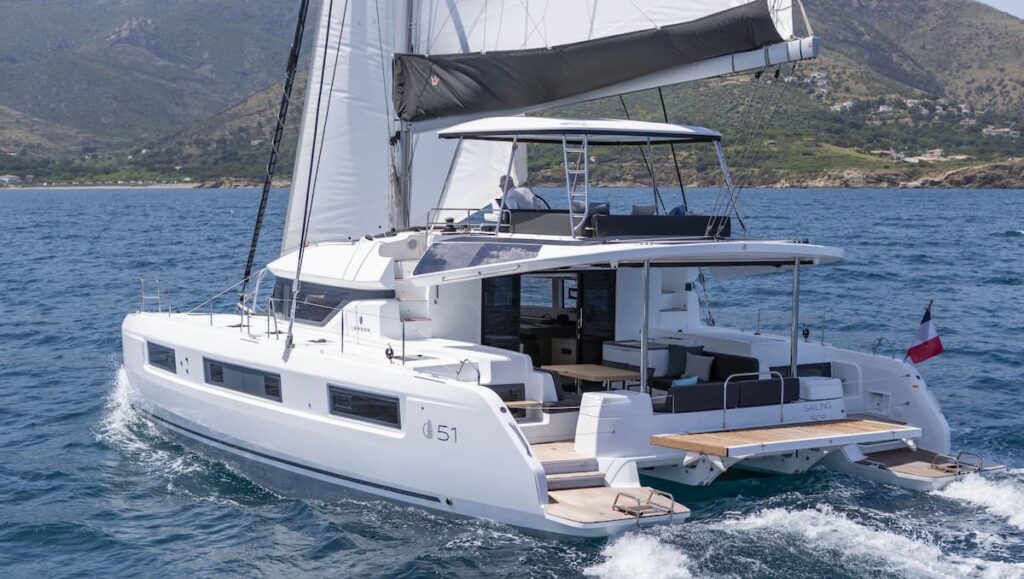
Known for their exceptional sailing catamarans, Lagoon has been at the forefront of innovative design and functionality. Their vessels are renowned for providing excellent stability on the water, spacious deck layouts, and top-quality rigging systems.
With models catering to both cruising and racing enthusiasts, Lagoon offers versatility that appeals to a wide range of sailors. Another prominent player in the industry is Leopard Catamarans.
Specializing in both sailing and power catamarans, Leopard has gained a reputation for its sleek designs and exceptional performance on the water. Their sailing models boast efficient hull shapes optimized for speed while maintaining comfort onboard.
On the other hand, their power catamarans offer remarkable fuel efficiency without compromising luxury. For those seeking luxury beyond measure, Sunreef Yachts is a brand that stands out from the crowd.
Sunreef specializes in building custom-made luxury catamarans that redefine opulence on water. With meticulous attention to detail, these floating mansions offer spacious living areas, stunning interiors adorned with high-end finishes, and an array of indulgent amenities such as Jacuzzis and private lounges.
Whether it’s for private use or charter purposes, Sunreef Yachts elevates the concept of luxury cruising. Privilege Marine has also made its mark on the industry by producing high-performance cruising catamarans loved by sailors worldwide.
Their vessels prioritize speed without compromising comfort or safety. Privilege Marine prides itself on incorporating innovative design features such as a central helm station, allowing for excellent visibility and control.
These sailing catamarans are meticulously crafted with high-quality materials, providing a luxurious experience on the water. We have Fountaine Pajot , a longstanding name in the catamaran world.
With a wide range of models available, Fountaine Pajot caters to various boating preferences and budgets. Their sailing catamarans are known for their excellent maneuverability and stability, making them popular among both seasoned sailors and novices.
Fountaine Pajot also offers power catamarans that combine performance with comfort, ensuring an enjoyable cruising experience. The world of catamaran boats is enriched by several popular brands that cater to different needs and desires.
Whether it’s small catamaran brands focusing on sailing catamarans or larger manufacturers specializing in power vessels or luxury yachts, each brand brings its unique touch to the market. From racing enthusiasts seeking high-performance vessels to those looking for opulent cruising experiences, there is a wide array of options available from renowned brands such as Lagoon, Leopard Catamarans , Sunreef Yachts, Privilege Marine, and Fountaine-Pajot.
Catamaran Boats offer a wide range of benefits and options for boating enthusiasts. The unique design and structure of catamarans provide stability, speed, and spaciousness that are unrivaled by other types of boats.
Whether you are looking for a racing catamaran to satisfy your need for speed or a luxury catamaran to indulge in the ultimate comfort and leisure on the water, there is a catamaran boat to suit your preferences. The advantages of catamaran boats cannot be overstated.
Their wide deck layout ensures ample space for socializing, sunbathing, or even hosting parties onboard. The stability offered by the twin hulls allows for easy movement on the boat without the constant swaying experienced on monohulls or pontoon boats.
Additionally, with their efficient rigging system and aerodynamic design, catamarans can harness the power of wind or motor engines to achieve impressive speeds. When it comes to catamaran brands, there are several well-established names in the market that have gained recognition for their quality craftsmanship and innovative designs.
Some popular brands include Lagoon Catamarans, Leopard Catamarans, Fountaine Pajot Catamarans, and Sunreef Yachts. These brands offer a range of options from small catamarans suitable for day trips to larger power catamarans designed for long-distance cruising.
While there are numerous advantages to owning a catamaran boat, it is important to consider some potential disadvantages as well. Due to their size and complexity, maintenance costs may be higher compared to other types of boats.
Additionally, docking restrictions may apply due to their wider beam compared to monohull vessels. However, despite these potential drawbacks, the overall appeal and popularity of catamaran boats continue to grow in recent years.
With advancements in technology and design techniques aimed at enhancing performance efficiency while maintaining comfort levels onboard, sailing enthusiasts have even more reasons to choose catamarans. Catamaran boats offer a thrilling and luxurious boating experience suitable for various purposes.
Whether you are an avid sailor seeking the excitement of racing catamarans, or a leisurely cruiser in search of comfort and style on power catamarans, the market offers an array of choices to fulfill your desires. With their exceptional stability, ample deck space, and impressive speed capabilities, catamaran boats provide an unmatched experience on the water.
So why wait? Embark on your next adventure aboard a magnificent catamaran and let the winds carry you towards an unforgettable journey filled with joy, relaxation, and breathtaking vistas.
Catamaran Boats FAQ
What are some popular brands of catamaran boats.
There are several popular brands of catamaran boats, including Lagoon, Leopard, Fountaine Pajot, and Nautitech. Each brand has its own unique features and designs, so it is important to research and compare different brands before making a purchase.
Where can I find cheap used catamarans for sale?
There are several websites where you can find cheap used catamarans for sale, such as Boat Trader, YachtWorld, and Sailboat Listings. It is important to thoroughly inspect any used boat before making a purchase to ensure that it is in good condition.
What is the difference between a catamaran and a sailboat?
A catamaran is a type of sailboat that has two parallel hulls instead of one. This design provides greater stability and speed, as well as more living space. In contrast, a traditional sailboat has a single hull and is typically slower and less stable than a catamaran .
Are catamarans safer than sailboats?
Catamarans are generally considered to be safer than traditional sailboats because of their stability and buoyancy. They are less likely to capsize or sink in rough seas, and their dual hulls provide redundancy in case of damage to one hull. However, proper maintenance and safety precautions are still necessary to ensure safe sailing.
What is the average cost of a catamaran boat?
The cost of a catamaran boat can vary widely depending on factors such as size, age, and brand. On average, a new catamaran boat can cost anywhere from $150,000 to $1 million or more. Used catamarans can be found for significantly less, but it is important to factor in the cost of any necessary repairs or upgrades.
Can catamarans be used for fishing?
Yes, catamarans can be used for fishing. Their stability and spacious decks make them well-suited for fishing, and many catamarans are designed specifically for this purpose. However, it is important to ensure that the catamaran is equipped with the necessary fishing equipment and safety features before setting out to sea.
- Recent Posts
- Responsibilities of a Fourth Engineer on Cargo Ships – September 10, 2024
- The Role of Cargo Ships in Global Trade – August 22, 2024
- Report: Yang Ming’s YM Mobility Explosion at Ningbo-Zhoushan Port – August 9, 2024
About the author
I worked as an officer in the deck department on various types of vessels, including oil and chemical tankers, LPG carriers, and even reefer and TSHD in the early years. Currently employed as Marine Surveyor carrying cargo, draft, bunker, and warranty survey.
Latest posts

Is Maritime Security Necessary on Modern Ships?
It’s vital for ships to stay vigilant. Isolation from land means having no backup or protection for miles, making them vulnerable to attacks and other threats. Equip modern ships using modern maritime security methods.
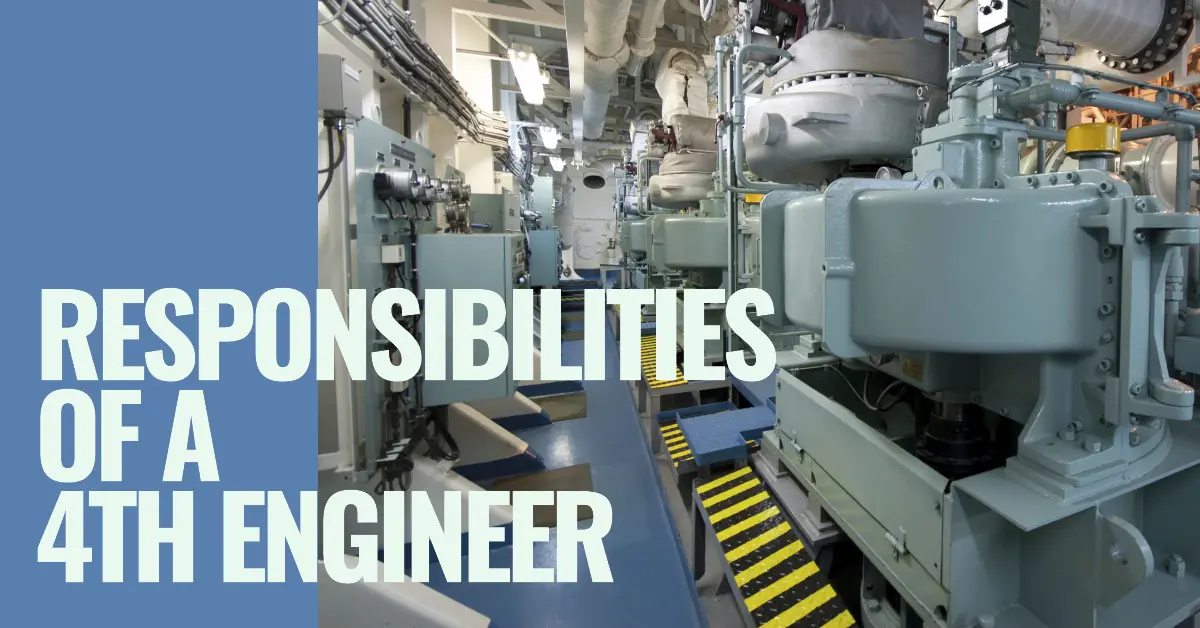
Responsibilities of a Fourth Engineer on Cargo Ships
A Fourth Engineer on cargo ships oversees engine room operations, machinery maintenance, and ensures compliance with regulations like MARPOL.

The Quality Control Process in Marine Manufacturing
Companies in the marine manufacturing space must have tight and effective quality control processes. What steps should an effective quality control process include?

84 Luxury Yacht Interiors: Bedroom, Galley and Salon Pictures
Posted on Published: April 13, 2022 - Last updated: June 13, 2022

A yacht is really just a luxury floating home . When you’re talking 70 feet and larger, they’re a lot nicer than my house. As you’ll see in the luxury yacht interiors below, the quality and aesthetics are simply gorgeous. And we merely feature a small handful of such boats. There are thousands and thousands of these worldwide.
Our epic yacht interiors article is split into 5 galleries: staterooms, guest bedrooms , salons and dinettes, kitchens and bathrooms. The point of this article is to merely give you a glimpse inside these ultra expensive boats… expensive to buy, run and maintain. Be sure to also check out our yacht decks galleries .
Related: Kayak Storage Ideas | Catamaran Apartment | Craftsman Floating Home | Large Floating Home
Yacht Primary Bedrooms (Staterooms)
We kick off our yacht interiors gallery with the stateroom. When it comes to the primary bedroom on these boats, no expense is spared. They are large, comfortable and stunning in design. These bedrooms are bigger than our primary bedroom.

[su_divider]
Yacht Guest Bedrooms (2 Beds)
Many guest bedrooms on a yacht have two beds so that it can accommodate more people. However, they are, as you’ll see below, still very, very luxurious. These are certainly cozy sleeping quarters.

Salon and Dinette Photos
My favorite room on the boat is the salon and/or dinette area. In many cases, the dinette doubles as the living room. Mega yachts have dedicated salons and dining areas. I love these superb lounge designs below in the cabin as well as the upper lounge areas.

I must admit that kitchens on these super yachts are fairly small. I guess the cooking is done by the staff and yacht owners prefer to have more space for bedrooms, deck space and lounge space. That makes sense given there really is limited space. Nevertheless, these kitchens are gorgeous and the yacht designers certainly didn’t skimp with respect to quality.

Most boats dedicate very little space to bathrooms. Not these. The primary bathrooms below are incredible. The smaller bathrooms are guest bathrooms. These luxury yachts are so large and spacious that even the bathrooms are both beautiful and comfortable to use.

Related: Yacht Decks | Gorgeous Mega Yacht Interior Design by Mojo Stumer Associates | Houseboats
- Yachting World
- Digital Edition

New catamarans: 2021’s most exciting launches
- April 7, 2021
Fast cruising is the theme this year, say Toby Hodges and Sam Fortescue, who look at some of 2021's exciting new multihull launches

2021 looks set to be a bumper year for new catamarans as the trend for fast cruising yachts, which deliver plenty if living space continues. This year there are set to be several new catamarans on the market, here’s our selection of those about which we are most excited.
A group of wild enthusiasts in the landlocked Czech Republic are the force behind the new IC36 from Independent Catamaran. The debut model is a fully race-tuned cat that aims to appeal to speed freaks as well as performance cruisers. Oh, and it unbolts to fit inside a shipping container or on a trailer!
Perhaps closer in design terms to the Extreme 40 than a traditional cat, the IC36 has super narrow hulls, high displacement bows and an optional rotating carbon rig with composite stays.
A sporty-looking carbon beam braces the bows and doubles as a bowsprit for asymmetric sails. Deep daggerboards help windward performance, and there’s a racy dual carbon tiller providing direct rudder control.
“The first time I saw it, I just felt like it was from one of Jules Verne’s adventures,” says co-founder Jaromír Popek.
The boat has been optimised for electric propulsion with twin 6kW Oceanvolt saildrives and up to 15kWh of lithium-ion batteries giving a range of a couple of hours. Powerful hydrogeneration under sail keeps batteries topped up. For longer spells at anchor , there is also a decent 1.15kW array of Solbian solar panel s which folds away when not required.
As much fun as this boat should be to sail in its Raw racing variant, it is also available with more creature comforts.
The Pacer model has a coachroof, cockpit tent, more storage and cooking and freshwater systems. It can accommodate a reported eight people in the hulls, with a fridge and two-burner hob to port and a shower/heads to starboard. Or you can opt for a fridge and hob in the folding cockpit table.
Construction is in epoxy-glass composite with local Kevlar reinforcement and foam core, helping to keep weight down to less than 3 tonnes (key for trailering). And there are three buoyancy chambers in each hull, which underpin the claim that the boat is unsinkable.
For all the variants, the light weight and high-performance rig means you can sail in a breath of wind. In a blow, the sky should be the limit. Expect reaching speeds of 20 knots plus, particularly if you take the high-modulus carbon wing mast from Pauger.
Specifications:
LOA: 11.00m / 36ft 1in Beam: 6.20m / 20ft 4in Draught: 0.85-2.00m / 2ft 9in-6ft 7in Displacement (light): 2,500kg / 5,512lb Price ex VAT: €295,000 (for RAW) Builder: www.independentcatamaran.com
This new launch from the world’s number one catamaran brand is the largest in the range of ‘regular’ boats, before entering the more luxurious world of the Lagoon 65.
It has been drawn by VPLP and Patrick le Quement, whose design nous has done much to make cats more mainstream. Many of the features, therefore, will be familiar from the smaller boats.
However, that extra length creates more volume below, so the Lagoon 55 can be arranged with up to six true double cabins with ensuite heads. “It’s the first time we have six cabins of the same size and function and a larger flybridge,” explains products developments manager Martina Torrini during a premiere virtual tour of the first model to launch in March.
Another first is the curving steps up from the transom skirt to the aft deck, dubbed ‘the stairway to heaven’. “The surfaces of the transom can be used differently,” adds Torrini. “Not just a way to access the boat, they become in themselves a living area.” This feature extends the size of the cockpit to 25m2, and even offers a plancha grill.
There’s more social space on the huge flybridge (with fridge and bar) and a movable sunpad on the forward part of the coachroof. The boat also features Lagoon’s first ever dedicated forward cockpit, connected to the saloon by a drop-down window.
A 107m2 fat-head main provides grunt, but is coupled with a self-tacking jib. As with all Lagoons, the emphasis is on comfort and ease of use rather than speed and windward pointing ability.
LOA: 16.56m / 54ft 4in Beam: 9.00m / 29ft 6in Draught: 1.55m / 5ft 1in Displacement: 26,500kg / 58,433lb Price: €tbc Builder: www.cata-lagoon.com
Fountaine Pajot Samana 59
Replacing the five-year-old Ipanema 58, this luxurious 59-footer integrates many of the new design features of the 45, which boasted longer, wider hulls that nevertheless showed 10% less drag. Chief among the new attractions is an enlarged cockpit, forward lounge and flybridge, for more socialising space.
“We wanted to emphasise her identity by optimising her interior and exterior spaces to make this 59ft catamaran the equivalent of a larger yacht,” explains designer Olivier Racoupeau.
“Whether it’s the flybridge, the cockpit or the saloon, we’ve worked hard to find harmony between all the living spaces on board, to gain every millimetre inside and outside.”
There’s a door forward out of the saloon, and the option of a hydraulic bathing platform, which doubles up for tender storage. Up to six cabins are offered, and the rare option of putting the galley up in the saloon or down to port. Hull number one is joining the World ARC .
Meanwhile, a new 51 is tipped for launch in 2022, which will focus on sustainability and have 2kW of flush solar panels built into the flybridge.
LOA: 18.21m / 59ft 9in Beam: 9.46m / 31ft 1in Draught: 1.40m / 4ft 7in Displacement: 25,500kg / 56,217lb Price ex VAT: €1,302,900 Builder: www.catamarans-fountaine-pajot.com
The new 42 replaces the Leopard 40, and it draws on the latest design thinking from the larger boats in the range. Like the award-winning Leopard 50, it has continuous hull windows, a hardtop, and contrasting coachroof accents. But it also goes further, with plumb bows and long horizontal chines.
That lounging space on the coachroof adds 65% to the exterior entertainment area. “By integrating the geometry of the lounge into the GRP hardtop, we were able to achieve a lightweight area that added less weight to the boat than one average sized crewmember,” explains Michael Robertson, chief designer at builder Robertson & Caine. It has been cleverly engineered so as not to steal headroom from the cockpit.
In contrast to many modern cats, the Leopard 42 makes a virtue of the separate cockpit and saloon, whose seating is focused on the forward galley. There is lots of glazing and a full-height door out onto the foredeck. Every cabin has a third more floor space and twice the glazed area of the old Leopard 40. Each has an island berth and its own heads with shower.
But it’s not all about space. “Performance potential remains one of the top priorities,” says naval architect Alex Simonis of Simonis-Voogd Yacht Design. “We spend a lot of time refining the rig geometry and the sail layout to boost the efficiency of the rig plan. At the same time, the ongoing refinement in hull and appendage design allows us to create a yacht with better sea motion and more agility.
LOA: 12.67m 41ft 7in Beam: 7.04m 23ft 1in Draught: 1.40m 4ft 7in Displacement: 12,460kg 27,469lb Price ex VAT: €399,000 Builder: www.leopardcatamarans.com
The new entry-level yacht from France’s Neel Trimarans is designed to bring the world of three hulls to a new clientele.
Building on the success of the larger Neel 47 and Neel 51, the 43 takes the fight to the catamaran, with a big superstructure that includes two double cabins as well as a galley and saloon.
There’s a further double cabin forward in the central nacelle, and cosy singles in either bow. A sliding door and window allows the saloon and the cockpit seating areas to be socially connected, although they remain two very different spaces.
The bulkhead helmstation to starboard has commanding views out over the huge coachroof. From the drawings, this appears to allow a tight sheeting angle for the genoa, but brings the mainsheet, which is fastened to the transom, close to the davits and skirt of the central hull.
The main is square-topped with two full battens and there is also a high-performance carbon spar option.
Though the lay-up is in standard foam-cored glassfibre, Neel says it is leaning towards more environmentally friendly construction. Interior joinery is from sustainable Alpi wood and recyclable material.
LOA: 13.11m / 43ft 0in Beam: 7.50m / 24ft 7in Draught: 1.50m / 4ft 11in Displacement: 9,000kg /19,841lb Price ex VAT: €329,800 Builder: www.neel-trimarans.com
Marsaudon Composites has quietly built an enthusiastic following for its TS42 and TS50 catamarans since the smaller boat was launched six years ago.
That these have been the first boats to cross the Atlantic in the last two ARC s has also done its reputation no harm.
The yard is based at Lorient La Base, at the heart of the French offshore racing scene, so it’s perhaps no surprise these designs are lightweight and offer plenty of performance.
The direct tiller steering, which gives a responsive feel to the helm, is an example of the thinking that sets these boats apart from other multihulls and makes them sought after models. Yet they also have enough space both on deck and below to offer very comfortable living.
A 57-footer from the board of Marc Lombard will be the third design to join the stable. It shares the same hallmarks as the existing models, although a wheel steering option will also be offered.
In suitable conditions this is a cruising yacht that can be expected to hit speeds of well over 20 knots.
The hull shape is clearly a progression from the earlier models, while following the same light displacement principles with fine hull shapes. Lombard drew a new shape for the bows to increase efficiency and reduce the tendency for bow-down trim. He told us: “The bows are shaped so that, when the boat is powered up and starts to heel, the lee bow will generate extra lift to push the bow up.”
The additional size makes the interior spaces of this boat significantly larger than those of the 50-footer, especially in the hulls. Much thought has also gone into ergonomics and weight saving, stripping out and simplifying anything that is not essential. CEO Damien Cailliau likes to draw on a quote from Colin Chapman, founder of Lotus Cars: “Simplify, then add lightness.”
As an example, there are no hull linings, which saves weight and complication, but requires extremely neat moulding. “A core competency of Marsaudon Composites is that we produce excellent mouldings,” says Cailliau, “so we don’t need to hide our work.”
Article continues below…

Outremer 4X on test – a high-performance liveaboard cruiser that is built to last
It’s a mix of everything you need for cruising and what you want to feel for performance,” Loïck Peyron said…

Seawind 1260: Lightweight catamaran making waves on both sides of the Atlantic
The Seawind 1260 has been well received in the States, where the brand has a strong following, but these multihulls…
As a low volume builder – only 28 of the smaller boats have been built in total – Marsaudon Composites can offer semi-custom interior arrangements, providing they don’t add unnecessary weight. The boat can also be built with varying amounts of carbon to reduce displacement further.
At the same time as announcing this design Marsaudon launched a rebranding of the range, which will now be known as Ocean Rider Catamarans (or ORC). The new name is a better fit with the qualities with which owners identify than the Très Simple concept that led to the original TS designation.
To underscore the difference between these boats and the majority of catamarans in this size range a tiller has been incorporated in the logo.
Tooling for the ORC 57 is under construction and the first boat is scheduled to be unveiled in September 2021.
Base price ex VAT: €1,085,000 Builder: www.marsaudon-composites.com
Current Marine CM46 & CM52
The founder of RS Sailing , Martin Wadhams, is a racing sailor who now spends more and more time cruising.
Martin and his wife, Amanda, enjoy sailing fast boats and have spent some time looking to upgrade from their Pogo 12.50 to a multihull. Their search for a true performance cruising catamaran – and one that wouldn’t cost seven figures – turned out few viable options.
Australian-based designer Jeff Shionning put them onto some fresh designs he has done for Current Marine, a new South African brand formed from an experienced team of composites experts at Knysna, between Cape Town and Port Elizabeth on the south coast.
It has been set up to build the new CM46 and CM52 in low-volume semi-custom production. On visiting the yard a year ago, Wadhams was impressed enough with the high tech builds to order the second CM46.
He reports that the joinery is all laminated in, there is plenty of opportunity for layout customisation (in three or four cabins) and, owing to the lower labour costs in South Africa, pricing is keen.
Shionning’s CM designs are lightweight, efficient catamarans that should be able to sail well in light breeze and outrun weather systems in the open ocean.
Key features include daggerboards, fine bows, centralised weight of engines and tanks, and high bridgedeck clearance. The rig is also positioned amidships for optimum weight centralisation, while also helping to create a large foretriangle for flying a range of furling headsails. Aluminium or carbon spars and diesel or hybrid propulsion are offered.
Wadhams says there is good stowage space and payload capacity for comfortable liveaboard cruising. “They’re built using post-cured epoxy, carbon, E-Glass and PVC foam-cored laminates – a level above mainstream brands,” he insists. “This brings the construction found in a few larger, high-end boats into smaller-size catamarans.” The first CM46 is a full carbon racing version destined for an Auckland-based owner and is due to launch early 2021. The second boat (for Wadhams) has a more cruising-oriented spec.
Prices ex VAT: CM46 €635,000, CM52 €787,000 Builder: www.currentmarine.co.za
Seawind 1370
Is this the most popular new design of 2021? Although the first of this new 45ft model is not due to launch until later in the autumn, there has already been a phenomenal uptake in orders.
Publicity has been helped by vloggers Sailing Ruby Rose ordering one of the first boats, but a staggering 55 have been sold already. This has led to the Australian/Vietnamese yard establishing a new technical department that is separate from the production department.
European sales manager Jay Nolan says this 13-strong team is tasked with working up every system on the boat and looking at hybrid solutions.
Price ex VAT: €599,000 Builder: www.seawindcats.com
Outremer 55
A contemporary fast cat set up for short-handed world cruising, Outremer’s exciting new 55 launches this winter.
We previewed this VPLP design in our September issue and hope to test it during the spring. Much focus has been placed on weight and stiffness to help increase performance and ensure the boat can sail in the lightest breezes and therefore rarely need engine power.
Price ex VAT: €1,215,000 Builder: www.catamaran-outremer.com
If you enjoyed this….
Yachting World is the world’s leading magazine for bluewater cruisers and offshore sailors. Every month we have inspirational adventures and practical features to help you realise your sailing dreams. Build your knowledge with a subscription delivered to your door. See our latest offers and save at least 30% off the cover price.
We earn a commission for products purchased through some links in this article.
Inside a renovated canal boat on Regent's Canal in London
A love of outdoor adventure led a documentary film-maker to explore a new way of living.

Eager to live in central London near the BBC, where much of his work is generated, film-maker Sam Farmar was looking for a home with outdoor space. However, getting a flat with a balcony is a tall order in central London, where properties are hugely expensive.
A recent job on a remote tropical island, though, led him to consider alternative lifestyles. ‘I was filming the progress of a group of 14 men who were stranded on a remote tropical island. It was a gruelling six weeks in which I had to hunt, forage and starve alongside my fellow castaways as we did our best to survive. I wouldn’t repeat it, but I did learn something about myself; I love living outside.’

That discovery led him to chat to a friend who lived on a canal boat in central London, and her agent helped Sam track down Amaris, a sleek canal boat for sale, moored on Regent’s Canal, just north of London Zoo. ‘It was a hunk of steel, painted white – it looked like a floating fridge,’ was Sam’s first impression. ‘But it was nothing that a new coat of paint couldn’t fix. I found a quiet green from a company that specialises in restoring boats, coaches and tractors.’
Sam soon discovered, to his delight, that buying a boat was as easy as buying a car or a lawn mower. ‘No solicitors’ fees, no stamp duty; just a simple transfer arranged by the Canal and River Trust to put the mooring in my name.'

When he moved in he soon realised just how superb the position of his mooring was. ‘In other places, such as Little Venice, the canal is very narrow. You live cheek by jowl and end up looking directly into your neighbour’s kitchen or bedroom. In Chelsea, the tides and bitter Thames’ wind threaten to strip away the romance, but Amaris is moored on the widest stretch of the Regent’s Canal, where boats are positioned along a private bank.
‘It’s a 10-minute bike ride to the BBC. Green trees surround the moorings, secure gates keep boats relatively safe and Amaris has plenty of outdoor space; a flat roof and two terraces or open decks as they are called – one at the bow and one at the stern.

‘I grow herbs and vegetables in large pots so I feel the benefits of rural living, and of course, when I take off on trips to the country I can land up moored beside a field of cows,’ explains Sam. ‘I feel enormously fortunate to enjoy the best of two worlds – and I believe this is the best boat in London!’

Originally built to host canal-side drinks and dinner parties, it had been just one large space in which the previous owner entertained clients. Sam took on the challenge of turning it into a proper home, installing a bathroom , bedroom and kitchen. With the help of Lance Lawson, a professional joiner and friend, they laid new floors; wide oak boards for the living room space and four tons of hardwood and rubber yacht floor to cover the roof. Then new partitions, central heating, double-glazed windows, shutters and plumbing were installed. Every bit of storage was super-organised, with shelves fixed precisely to fit wine glasses and plate drawers sized as deep as a pile of eight plates, and so on.

‘My design format was simple. Paint walls white; make the most of the space – so all the doors are bifold and handles are recessed. Although nothing is particularly ‘boaty’ in style, the quality and finish are as good as in any high-end yacht, or West End apartment for that matter.’ Sam’s best buy was a desk, which folds out lengthwise to seat eight for dinner. ‘Adaptable pieces are important. I use the long, narrow coffee table as a bench when guests come for dinner.’
For the sitting room, he found a comfortable sofa and armchair, cosy intimate lighting with table lamps and built-in storage space for books, suitcases and clothes. Only two regrets faintly bug him. ‘If I could redo the skylights, I would make sure they were open-able and I’d install a better sound system.’
There’s no chance of feeling alone on his boat. Sam points to a group of excited schoolchildren in canoes paddling past the kitchen window. Next, a water bus full of happy waving tourists takes the corner just missing the starboard. Finally, two men on a punt, one strumming the guitar serenading clients and the other handling the long pole, drift past the sitting room windows. Sam, who clearly enjoys this constant pageantry, remarks: ‘I have decided privacy is an over-rated commodity.’

When the boat sets out on family trips it is often filled with Sam’s seven godchildren, nephews and nieces and friends. Within one week’s holiday, he says, they dished up more than 135 meals. Only once did a woman fall off the boat, ‘but we scooped her to safety.' Otherwise, life continues at a peaceful, friendly pace with the occasional swan gliding past and peering through a window, and at times, a duck or two can be found seated on the rear deck sunning themselves.

A surprising amount of hanging space is available in the bedroom cupboard , which is tucked next to a good-size wet-room. Sam has managed to incorporate the biggest and best showerhead available in here. The compact kitchen is fully equipped with a dishwasher, ovens and hob. Life on a boat in film-director style is in a sybaritic category all of its own. Who needs a flat?
Follow House Beautiful on TikTok and Instagram .
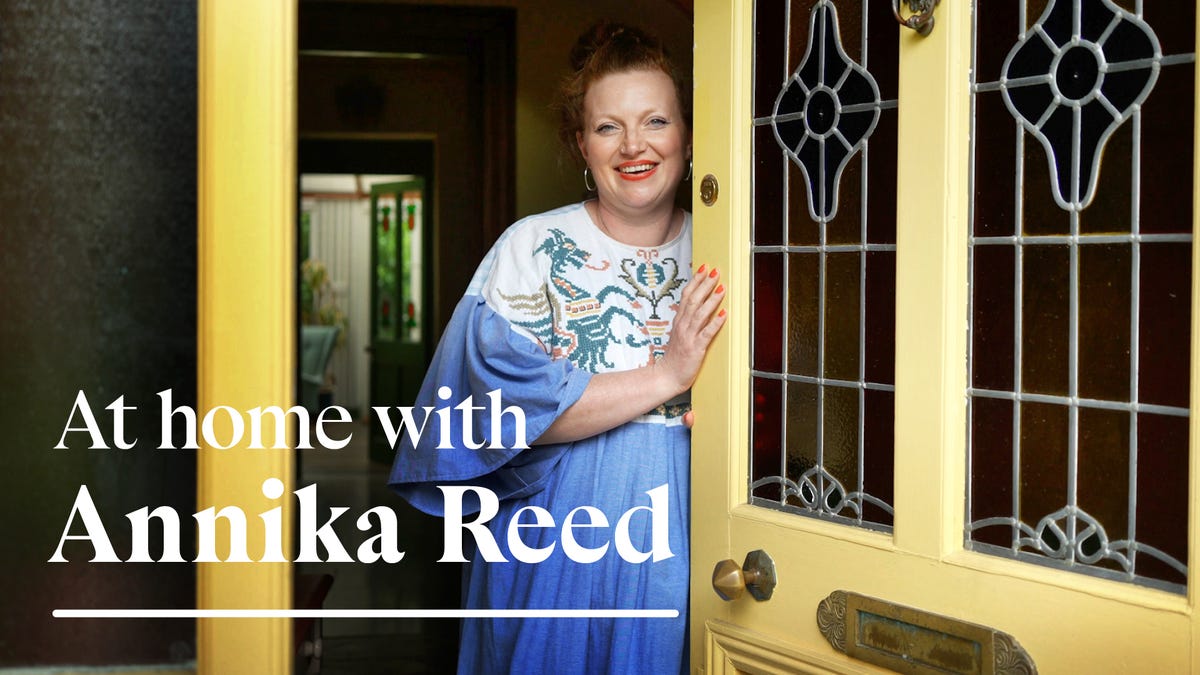
App: House Tours

Tour this modern Kent home with bold interiors

Before & After: A renovation bursting with colour

A new-build Lancashire home with lots of character

Inside a Victorian home by the sea

A period home with an interior designer's touch

Explore Sheree Millington’s colourful home

A coastal cottage brought to life with colour

A Brighton terrace with Scandi-industrial style

Step inside this new-build eco home in Somerset

Inside a renovated Victorian villa in Kent

This Scottish eco home has spectacular loch views

Inside Katherine Ormerod’s stylish rental home

Cloyce Martin
Related news.

Aesha Scott Slams "Juvenile" Below Deck Med Co-Star

Quench Your Thirst with Below Deck-Themed Tumblers

Captain Sandy Shows Off the Crew's Cabins (VIDEO)

Carrie Shades Ellie for “Trying to Prove Her Authority”

Gael Cameron Confronts Joe Bradley: "You're a Prick"

Hannah Made a Lavish Purchase After Below Deck Med Exit

Aesha Declares New Stew Carrie “Outranks Ellie and Bri" (VIDEO)

The NSFW Reason Aesha Knew Fiancé Scott Was “The One”

A New Below Deck Med Stew Arrival Has Crew Members “Seething”

Sandy Confronts Jono After a Nearly Fatal “Screw Up”

Gael Slams Joe Over Love Triangle Drama: "I'm Losing Respect"

Captain Sandy Discovers a "Major" Problem on Mustique
Related clips.

Nathan Gallagher Tells Aesha Scott What's Being Said Behind Her Back

Start Watching the Below Deck Mediterranean Season 9 Finale Now

Aesha Scott and Carrie O’Neill Think Ellie Is "Overstepping"

Iain Maclean Is Thriving as a Tour Guide

Gael Cameron Questions If Her Feelings for Nathan Are "Real"

Aesha Scott Thinks Ellie Dubaich's "Ego" Is Getting in the Way of Work

Ellie Thinks Joe Just Wants Whoever Gives Him the Most Attention

Captain Sandy Yawn Raids Her Crew's Cabins

Gael Cameron and Joe Bradley Talk Out Their Issues

What Rank Will the New Stew Receive?

Carrie O'Neill Makes Her Below Deck Mediterranean Debut

Joe Bradley's Comment Has Gael Cameron's Blood "Boiling"
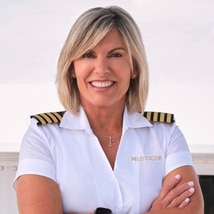
Johnathan Shillingford
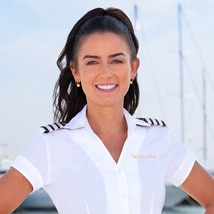
Aesha Scott
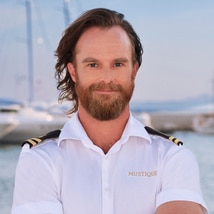
Iain Maclean

Joe Bradley

Nathan Gallagher
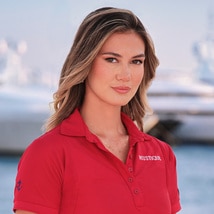
Gael Cameron
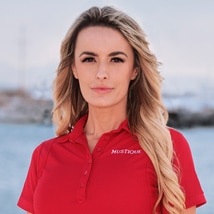
Elena Dubaich
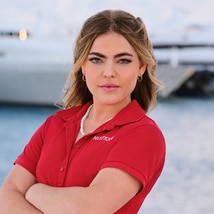
Carrie O’Neill
Inside the shocking Sicily yacht tragedy that left 7 people dead
There was a violent storm, but even then, luxury yachts are built to weather such events. so why did this boat sink off the coast of sicily, leaving seven people dead, by natalie finn | e news • published august 24, 2024 • updated on august 24, 2024 at 10:34 am.
Originally appeared on E! Online
Nobody was trying to reach the lowest depths of the ocean or otherwise test the boundaries of human endurance .
📺 Watch News4 now: Stream NBC4 newscasts for free right here, right now.
But what was supposed to be a routine pleasure cruise aboard a superyacht turned deadly all the same on the morning of Aug. 19 when the 184-foot Bayesian got caught in a storm and sank off the coast of Sicily .
"I can't remember the last time I read about a vessel going down quickly like that," Stephen Richter of SAR Marine Consulting told NBC News . "You know, completely capsizing and going down that quickly, a vessel of that nature, a yacht of that size."
Of the 22 people onboard, including crew, seven people died. The last of the bodies was recovered Aug. 23, an expectedly sad coda to what had already been a tragic week as the search for answers as to how this happened got underway.
And to be sure, every minute of the Bayesian's ill-fated outing is being fiercely scrutinized, starting with the general seaworthiness of the vessel itself.
Because, frankly, this was a freak occurrence.
U.S. & World
The day's top national and international news.

Warriors' Steve Kerr felt like ‘fish out of water' giving DNC speech

Hundreds of pagers exploded in Lebanon and Syria in a deadly attack. Here's what we know.
"Boats of this size, they’re taking passengers on an excursion or a holiday," Richter explained. "They are not going to put them in situations where it may be dangerous or it may be uncomfortable, so this storm that popped up was obviously an anomaly. These vessels that carry passengers, they’re typically very well-maintained, very well-appointed."
But in this case, a $40 million yacht sank, seven people are dead—including a billionaire tech mogul and his 18-year-old daughter—and morbid fascination doesn't need a second wind.
Here is how the story of the Sicily yacht tragedy has unfolded so far:
What happened to the yacht that sank off the coast of Sicily?
The Bayesian had set off from the Sicilian port of Milazzo on Aug. 14 at capacity with 12 guests and 10 crewmembers aboard.
The aluminum-hulled vessel was built in 2008 by Italian shipbuilder Perini Navi and registered in the U.K. Cruise sites listed it as available for charter at $215,000 per week, per the Associated Press.
On the morning of Aug. 19, the superyacht was anchored off the coast of Porticello, a small fishing village in the Sicilian province of Palermo (also the name of Sicily's capital city), when a violent storm hit.
The vessel "suddenly sank" at around 5 a.m. local time, seemingly due to "the terrible weather conditions," the City Council of Bagheria announced shortly afterward, per NBC News .
At the time, only one person was confirmed dead—the ship's chef—but six others were said to be missing. The 15 survivors—who managed to make it onto an inflatable life boat, according to emergency officials—were rescued that morning by the crew of another yacht that had been nearby when the storm hit.
"Fifteen people inside," Karsten Borner, the Dutch captain of the ship that was able to help (the Sir Robert Baden Powell), told reporters afterward, per Reuters. "Four people were injured, three heavily injured, and we brought them to our ship. Then we communicated with the coast guard, and after some time, the coast guard came and later picked up injured people."
When the storm hit, his boat ran into "a strong hurricane gust," Borner said, "and we had to start the engine to keep the ship in an angled position."
They "managed to keep the ship in position," he continued, but once the storm died down, they realized the other boat that had been behind them—the Bayesian—was gone.
The wreck ended up settling 165 feet below the surface, according to Italy's national fire department.
Fire officials said that divers, a motorboat and a helicopter were deployed to search for the missing.
Meanwhile, footage was captured of the ship capsizing on closed-circuit TV about a half-mile away from where it was anchored.
In the video obtained by NBC News, the illuminated 250-foot aluminum mast of the ship appears to list severely to one side before disappearing completely. Survivors recalled having just a few minutes to literally abandon ship.
Who were the seven people who died when the yacht Bayesian sank?
The tragedy initially became headline news because billionaire tech mogul Mike Lynch—"Britain's Bill Gates," some U.K. media called him—was among the missing. His body was ultimately recovered Aug. 22 .
"They told me that suddenly they found themselves catapulted into the water without even understanding how they had got there," Dr. Fabio Genco, head of the Palermo Emergency Medical Services, told NBC News Aug. 22. "And that the whole thing seems to have lasted from 3 to 5 minutes."
Genco said he got to Porticello about an hour after the Bayesian capsized.
Survivors "told me that it was all dark, that the yacht hoisted itself up and then went down," he said. "All the objects were falling on them. That’s why I immediately made sure, by asking them questions, if they had any internal injuries."
Why did the yacht sink?
Italian prosecutors are investigating to determine what transpired before the boat went down, according to NBC News.
Meanwhile, the CEO of shipbuilder Perini's parent company The Italian Sea Group defended the vessel itself as "unsinkable."
Perini boats "are the safest in the most absolute sense," Giovanni Costantino told Sky News Aug. 22 . What happened to the Bayesian "put me in a state of sadness on one side and of disbelief on the other," he continued. "This incident sounds like an unbelievable story, both technically and as a fact."
Costantino said it had to have been human error that led to the boat sinking, declaring, "Mistakes were made."
"Everything that was done reveals a very long summation of errors," he told newspaper Corriere della Sera Aug. 21, in an interview translated from Italian. "The people should not have been in the cabins, the boat should not have been at anchor."
The weather was "all predictable," he continued, adding that the storm "was fully legible in all the weather charts. It couldn't have been ignored."
The yacht's captain, identified as James Cutfield of New Zealand, was taken to Termini Imerese hospital for treatment. From there, he told La Repubblica, per Sky News , that he didn't see the storm coming.
Borner, the captain of the ship that rescued the 15 Bayesian survivors, told NBC News that he noticed the storm come in at 4 a.m. local time, and saw what looked to him like a waterspout, a type of tornado that forms above water.
The International Centre for Waterspout Research posted on X Aug. 19 that it had "confirmed 18 waterspouts today off the coasts of Italy. Some were powerful waterspouts, one of which may have been responsible for the sinking of a large yacht off of Sicily."
Borner said he didn't know why the Bayesian sank so quickly, guessing "it may have something to do with the mast, which was incredibly long." (A tall mast, even with its sails down, means there's more surface area exposed to wind, which can result in tipping.)
Confirming that one person was dead and six unaccounted for immediately following the wreck on Aug. 19, Salvo Cocina of Sicily's civil protection agency told reporters that a waterspout had struck the area overnight.
"They were in the wrong place at the wrong time," he said.
The 59-year-old founder of software firm Autonomy had been on the trip with his wife Angela Bacares and their 18-year-old, Oxford-bound daughter Hannah to celebrate his recent acquittal in the U.S. on fraud and conspiracy charges stemming from the $11.7 billion purchase of his company by Hewlett-Packard in 2011.
In a bizarre turn of events, Lynch's co-defendant at trial, Stephen Chamberlain, the former vice president of finance at Autonomy, died after being taken off life support following a road accident on Aug. 17. Chamberlain's attorney told Reuters Aug. 20 that his friend and client had been out for a run when he was "fatally struck" by a car.
Meanwhile, multiple people who contributed to Lynch's defense were on the cruise with him and his family.
The bodies of Morgan Stanley International Chairman Jonathan Bloomer—who testified on Lynch's behalf—and his wife Judy Bloomer, as well as lawyer Chris Morvillo, a partner at the U.S. firm Clifford Chance, and his wife Neda Morvillo, a jewelry designer, were recovered on Aug. 21 .
In a LinkedIn post thanking the team that successfully defended Lynch, Morvillo wrote, per Sky News , "And, finally, a huge thank you to my patient and incredible wife, Neda Morvillo, and my two strong, brilliant, and beautiful daughters, Sabrina Morvillo and Sophia Morvillo. None of this would have been possible without your love and support. I am so glad to be home. And they all lived happily ever after…"
The first casualty confirmed Aug. 19 was the ship's Canadian-Antiguan chef, later identified as Recaldo Thomas.
"He was a one-of-a-kind special human being," a friend of Thomas told The Independent . "Incredibly talented, contagious smile and laugh, an incredible voice with a deep love of the ocean and the moon. I spoke to him nearly every day. He loved his life his friends and his job."
Hannah's body was the last of the missing six to be found , with divers bringing her remains ashore on Aug. 23.
Lynch and Bacares, who was rescued, also shared a 21-year-old daughter, according to The Times.
While awaiting trial, Lynch—who maintained his innocence throughout the proceedings—had spent 13 months under house arrest in San Francisco. Back home in London afterward, he admitted to The Times in July that he'd been afraid of dying in prison if he'd been found guilty. (He faced a possible 25-year sentence.)
"It's bizarre, but now you have a second life," he reflected. "The question is, what do you want to do with it?"
(E!, NBC News and Sky News are all members of the Comcast family.)

IMAGES
VIDEO
COMMENTS
When looking at a catamaran from the outside, you might think there wouldn't be nearly enough room inside for people to move around—this is far from the case. All Catamarans feature 3 - 5 cabins, a fully equipped kitchen, indoor lounging area, and indoor & outdoor dining table. The larger the catamaran, the larger all of these spaces become.
Catamarans are known for their unique design, which features two parallel hulls connected by a deck. This design provides several advantages over traditional monohull boats, such as stability and speed. With their wide beam, catamarans have a reduced risk of capsizing and can access shallow waters due to their shallow drafts 1.
The cabins are of an extraordinary size and height, nothing to envy the bedrooms of homes or hotels. Typically, a 40-foot catamaran has four double cabins and two bathrooms; a 44-foot catamaran may have four double cabins each with private bathrooms and two sailor cabins (singles) in the bow. The cabins in most cases have double beds and have ...
A full tour of our Lagoon 42 Catamaran as we sailed it around the Seychelles Islands. We begin with a 360 degree view around the outside, and then continue w...
Short answer: The key parts of a catamaran include the hulls, bridgedeck, mast(s), rigging, sails, rudders, and daggerboards. These components work together to provide stability, propulsion, and control for this type of multi-hulled watercraft. Exploring the Essential Parts of a Catamaran: A Comprehensive GuideFrom cruising the open seas to enjoying lazy afternoons by the shore,
Most catamarans have two engines, one on each hull aft the stern; usually, they are internal with only the propeller in the water. The other option, which is cheaper and most often found on smaller boats, is to have one outboard engine placed amidship (middle). Inboard; engines are situated in a compartment inside the boat at the stern. On an ...
Sail with the weather forward or aft of the beam. Keep an eye on heel angle. Reduce sail if you start to see any more than 5° or so, unless you have a catamaran that is designed to lift a hull ...
As we've mentioned, catamarans are popular because they are incredibly spacious inside in comparison with a monohull. A catamaran beam spans the entire length of the craft without curving into a pointed bow, unlike a monohull. As a rule of thumb, a catamaran has something like 1.25 times the room of a monohull by length.
Catamaran Experience: Exploring Catamaran Interior Design. James Feldkamp. November 1, 2023. Catamarans, known for their impressive stability and spaciousness, have gained immense popularity among sailing enthusiasts and vacationers alike. These twin-hulled vessels provide an exceptional sailing experience and an even more remarkable sense of ...
The overall design maximizes space and adds small touches that makes the interior feel and appear very luxurious, e.g., the indirect lighting, a "hideaway" cabinet for the flat-screen TV, soft-close drawers and lockers, a washing machine with a nice adjoining hamper, and island beds to name a few. The furniture is well designed and finished.
Here are 22 important cruising catamaran sailing tips: Get familiar with your catamaran. Pack light. Inspect your boat regularly. Drop the anchor before you drift away. Before you get fatigued, take a break. Run one engine instead of two. Don't be pressured into setting sail. Document your sailing.
Maneuvering, especially inside the marina, is simplified by having two engines and two propellers. Catching a mooring ball is also simpler with a catamaran. Hulls - The catamaran's low draft helps in navigating shallow reef passages and enables you to anchor closer to shore. They are also often lighter and have less wave impedance ...
Inside Steering: Catamarans typically have an inside helm station located in the main salon or cabin. This allows the captain to steer and navigate the boat from the comfort of an enclosed space, protected from the elements. Inside steering is particularly advantageous in adverse weather conditions or when additional shelter is needed.
EP 124Join us as we give you guys a interior walk-through of our Dean 365 Ocean liner Catamaran you have NEVER heard of, that we have restored from the Aband...
Beach catamarans are also commonly referred to as 'beachcats.'. Getting wet is part of the fun when sailing on a beachcat, and these boats are known for their fast speeds and athletic sailing abilities. They can reach 20 knots, can be beached on the sand, and then re-launched through the surf.
A catamaran is a twin-hull boat with two equally-sized hulls placed side by side. They're powered by engines, sails, or both—and they're known for efficiency and speed. Catamarans are the most common kind of multihull boat. In this article, we'll go over the characteristics of catamarans and how to differentiate them from other types of ...
Head into the wind slowly, approach the ball on the same side of the centerline as your friend, who will later pick it up. Take into consideration the drift occurring by the wind and current. Use a boathook, stick, or whatever to pick up the line from the mooring ball and attach it to the center of your bridle.
See the inside of this luxury catamaran for charter in Jacksonville, and Fernandina Beach, Amelia Island, spring, summer, and fall; in Miami for the winter. ...
The cost of a catamaran boat can vary widely depending on factors such as size, age, and brand. On average, a new catamaran boat can cost anywhere from $150,000 to $1 million or more. Used catamarans can be found for significantly less, but it is important to factor in the cost of any necessary repairs or upgrades.
There are thousands and thousands of these worldwide. Our epic yacht interiors article is split into 5 galleries: staterooms, guest bedrooms, salons and dinettes, kitchens and bathrooms. The point of this article is to merely give you a glimpse inside these ultra expensive boats… expensive to buy, run and maintain.
Toby Hodges takes a look at 5 launches in 2024. Explore the latest in ocean cruising catamarans for 2024 with our lineup of five exceptional boats. From the eagerly awaited Seawind 1370 to the eco ...
17 different types of granite used inside and 16 leather finishes applied CNN — At 44 meters long (145 ft), Hemisphere is the largest sailing catamaran in the world.
The first CM46 is a full carbon racing version destined for an Auckland-based owner and is due to launch early 2021. The second boat (for Wadhams) has a more cruising-oriented spec. Prices ex VAT ...
In Chelsea, the tides and bitter Thames' wind threaten to strip away the romance, but Amaris is moored on the widest stretch of the Regent's Canal, where boats are positioned along a private bank.
Nathan Gallagher Tells Aesha Scott What's Being Said Behind Her Back
Inside the shocking Sicily yacht tragedy that left 7 people dead There was a violent storm, but even then, luxury yachts are built to weather such events.